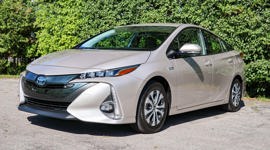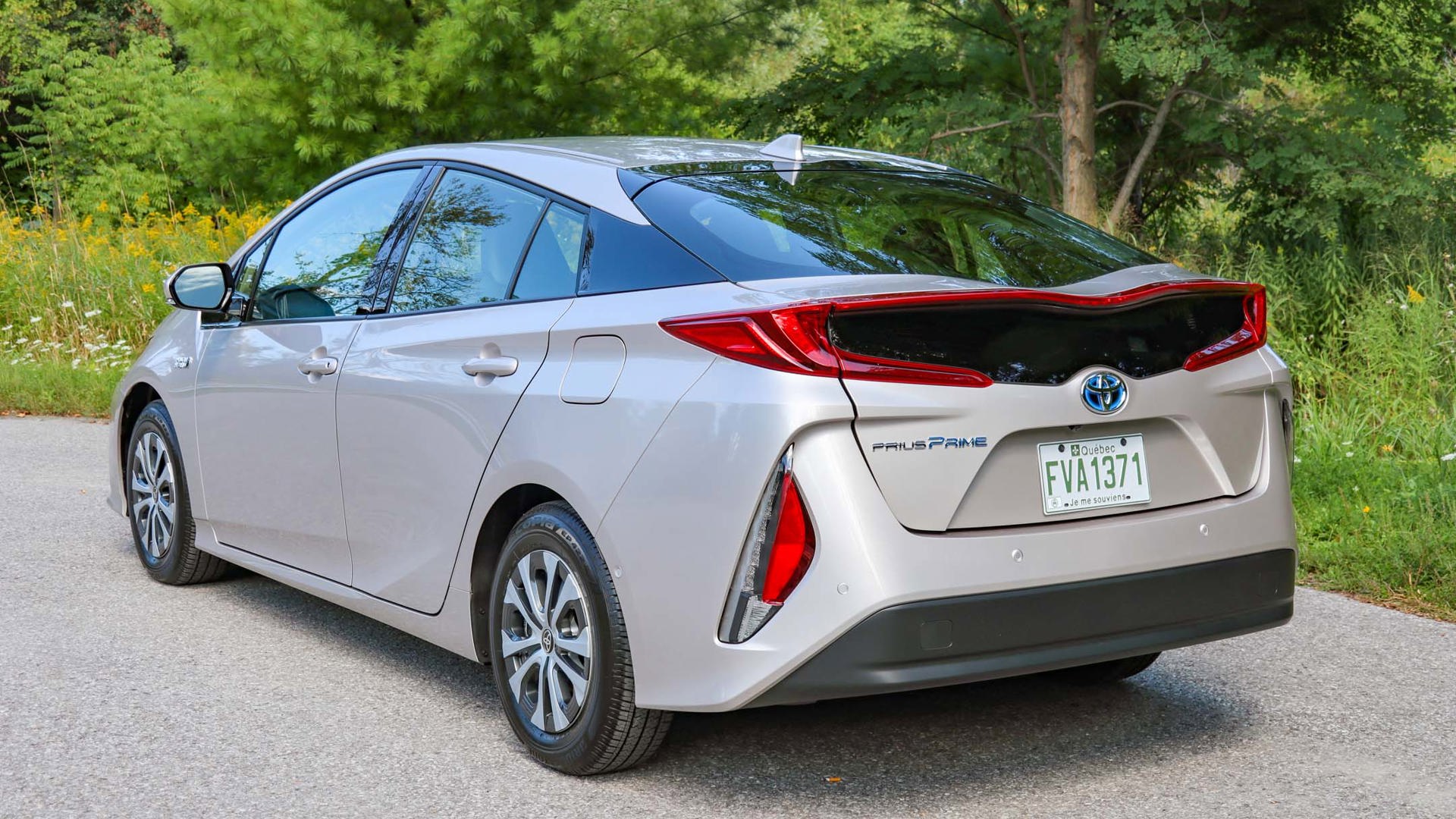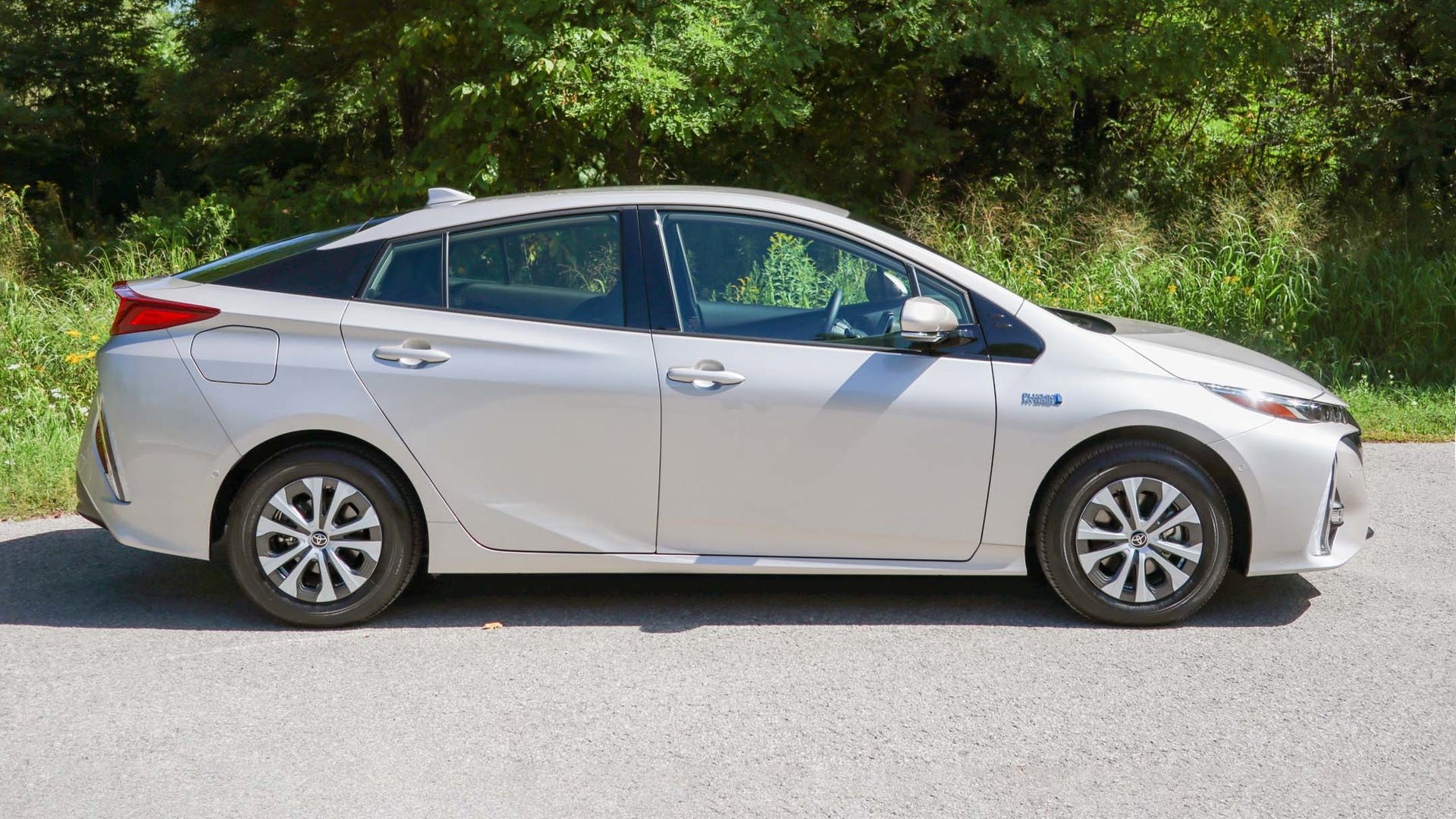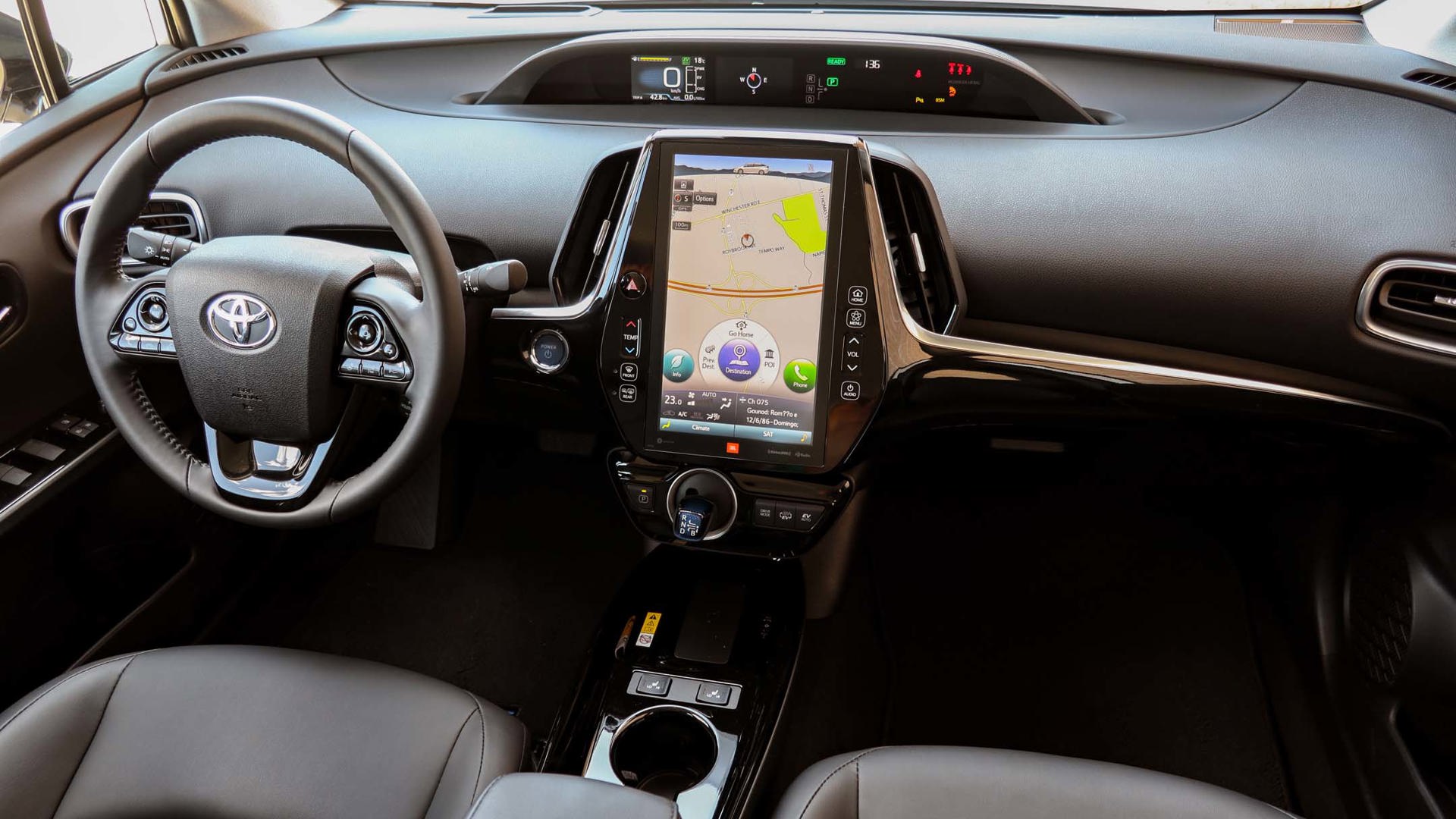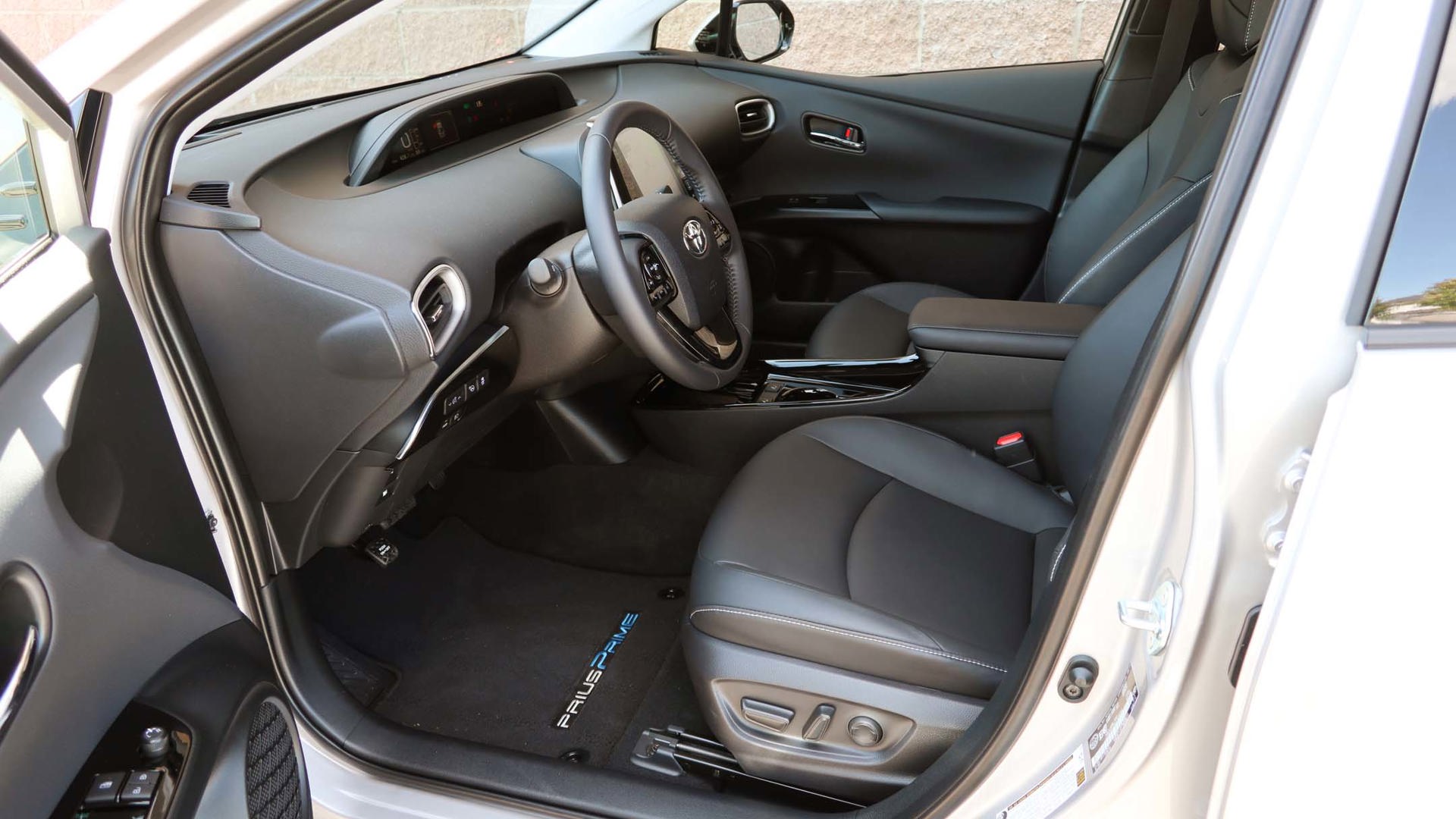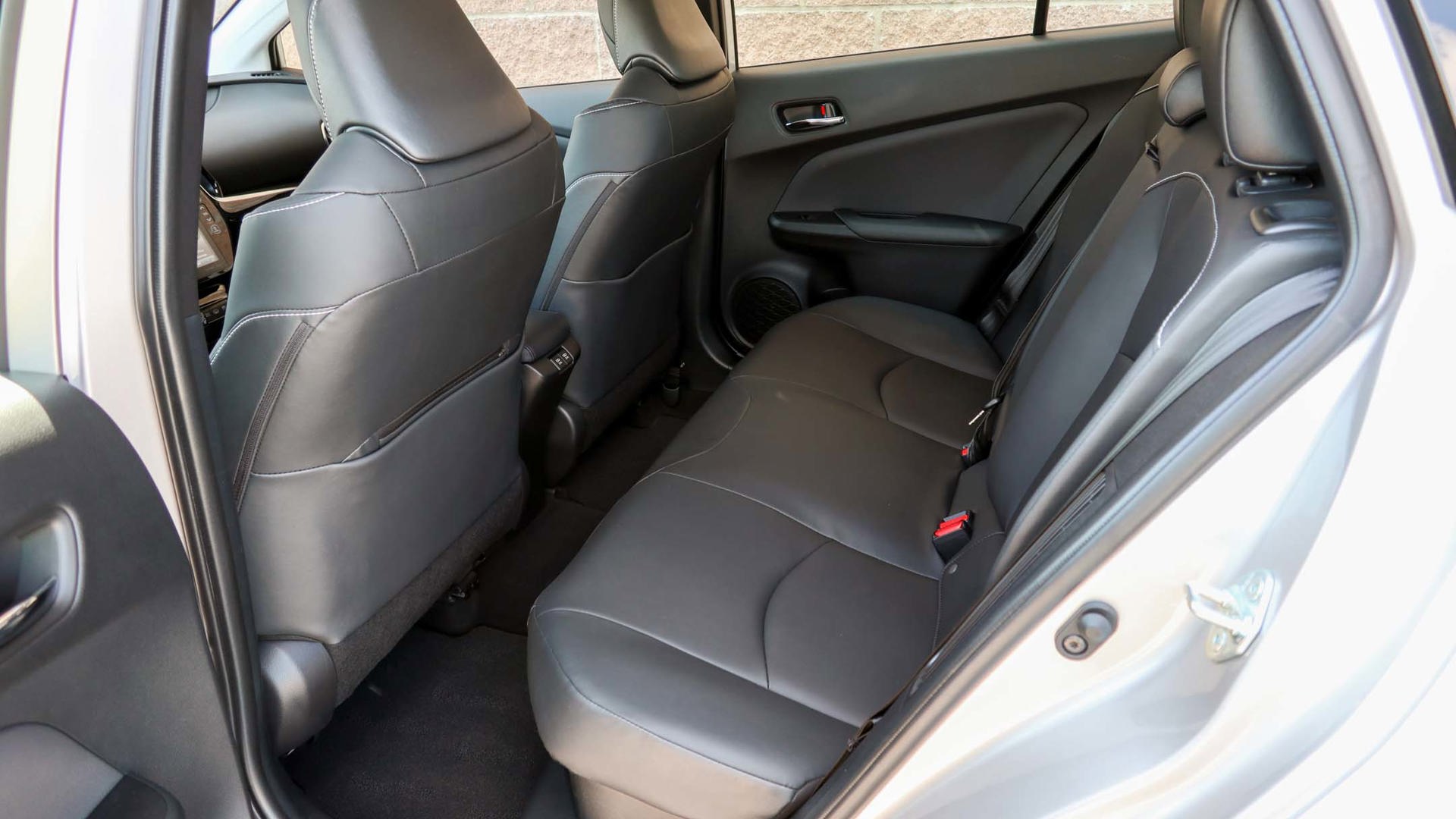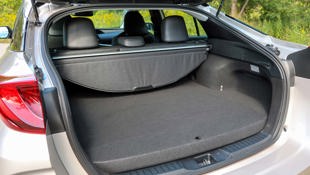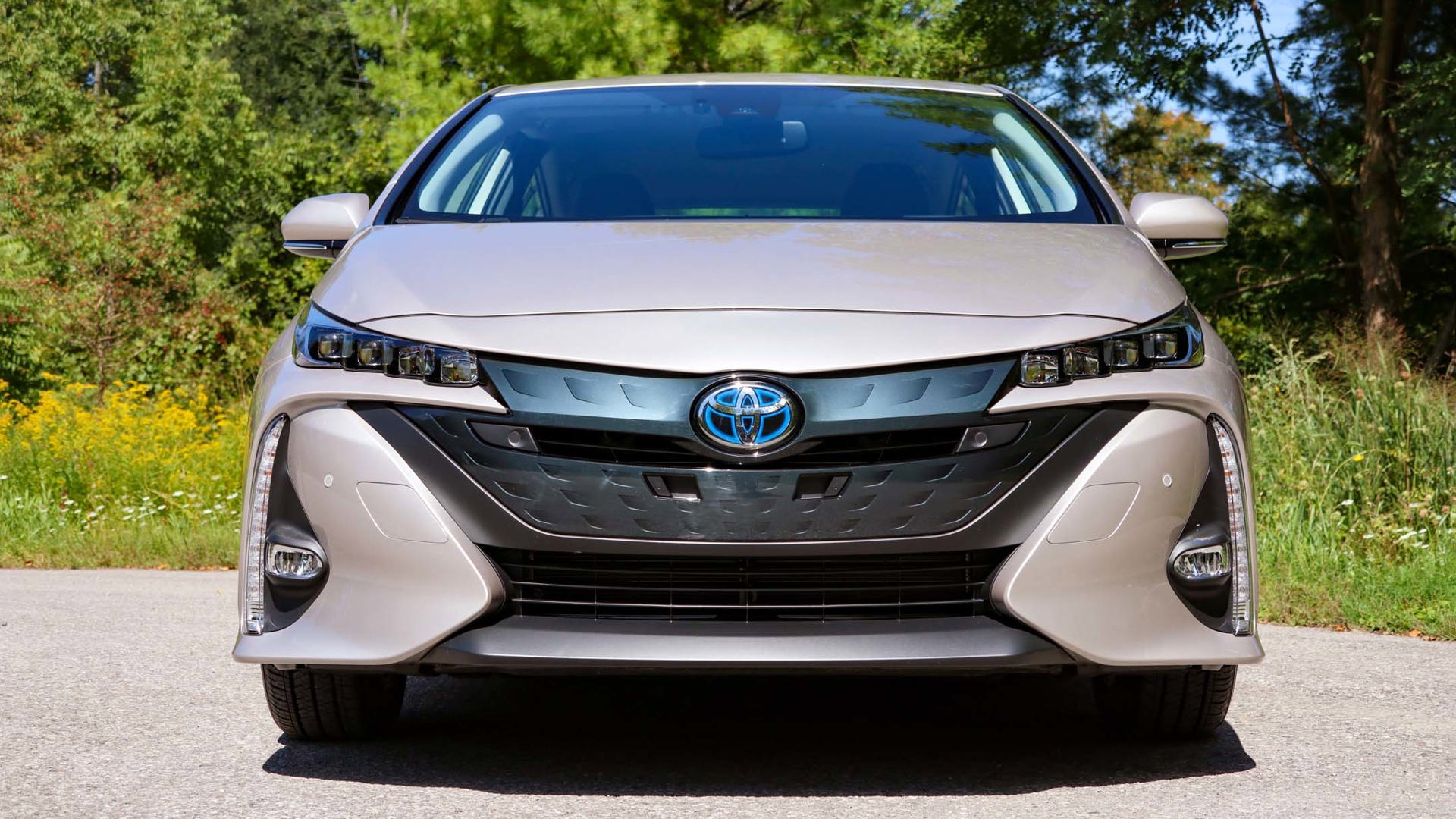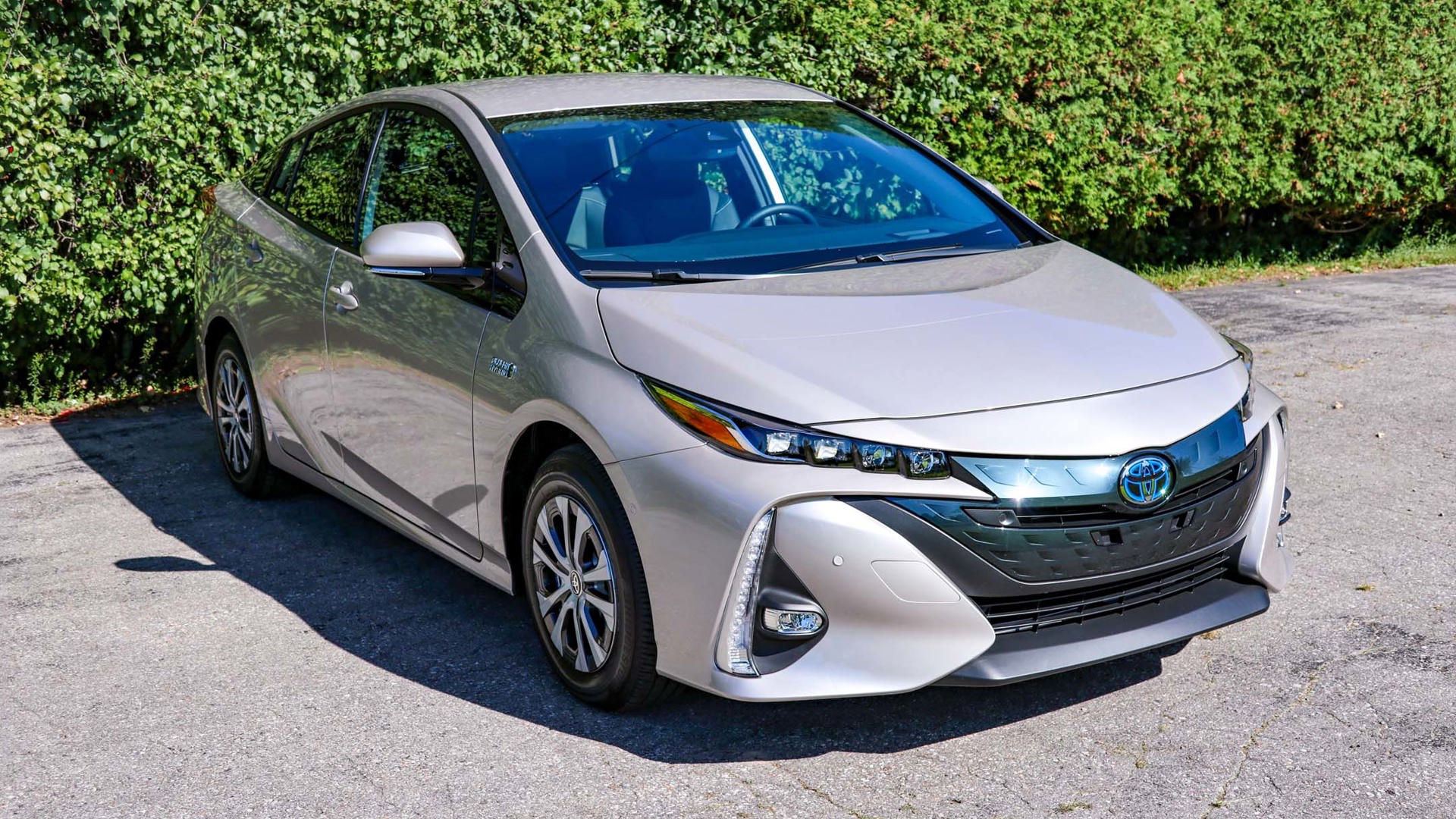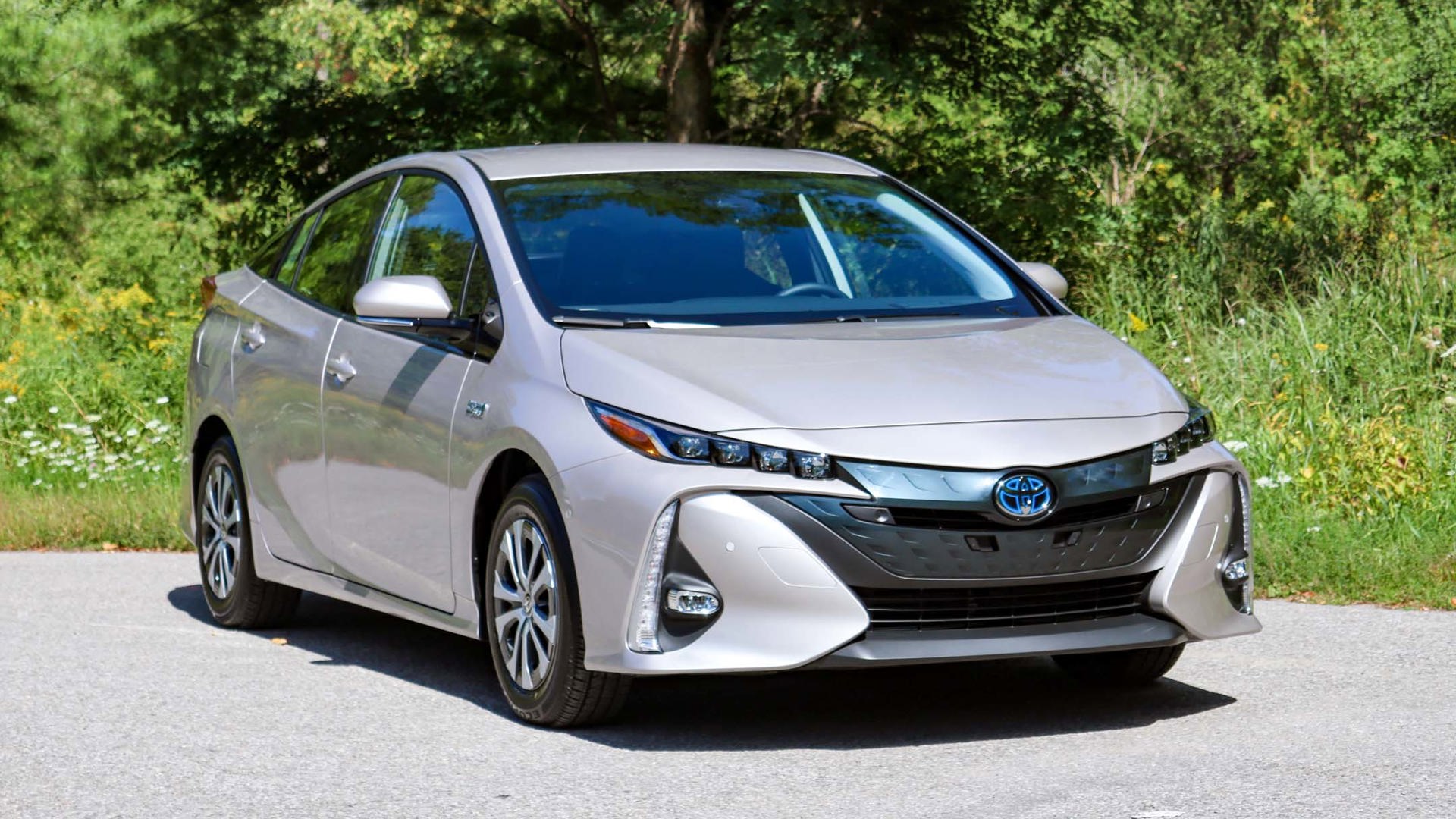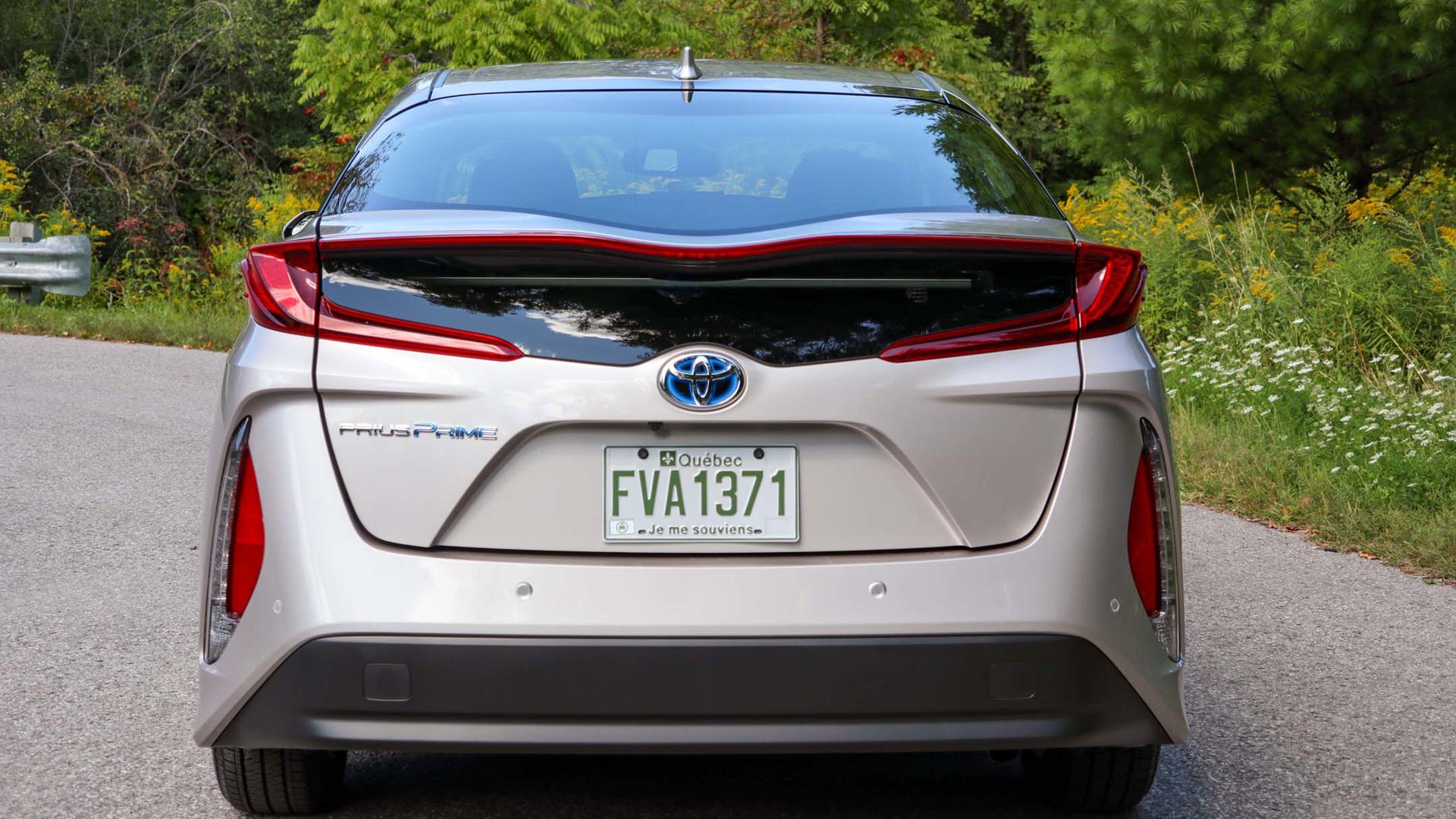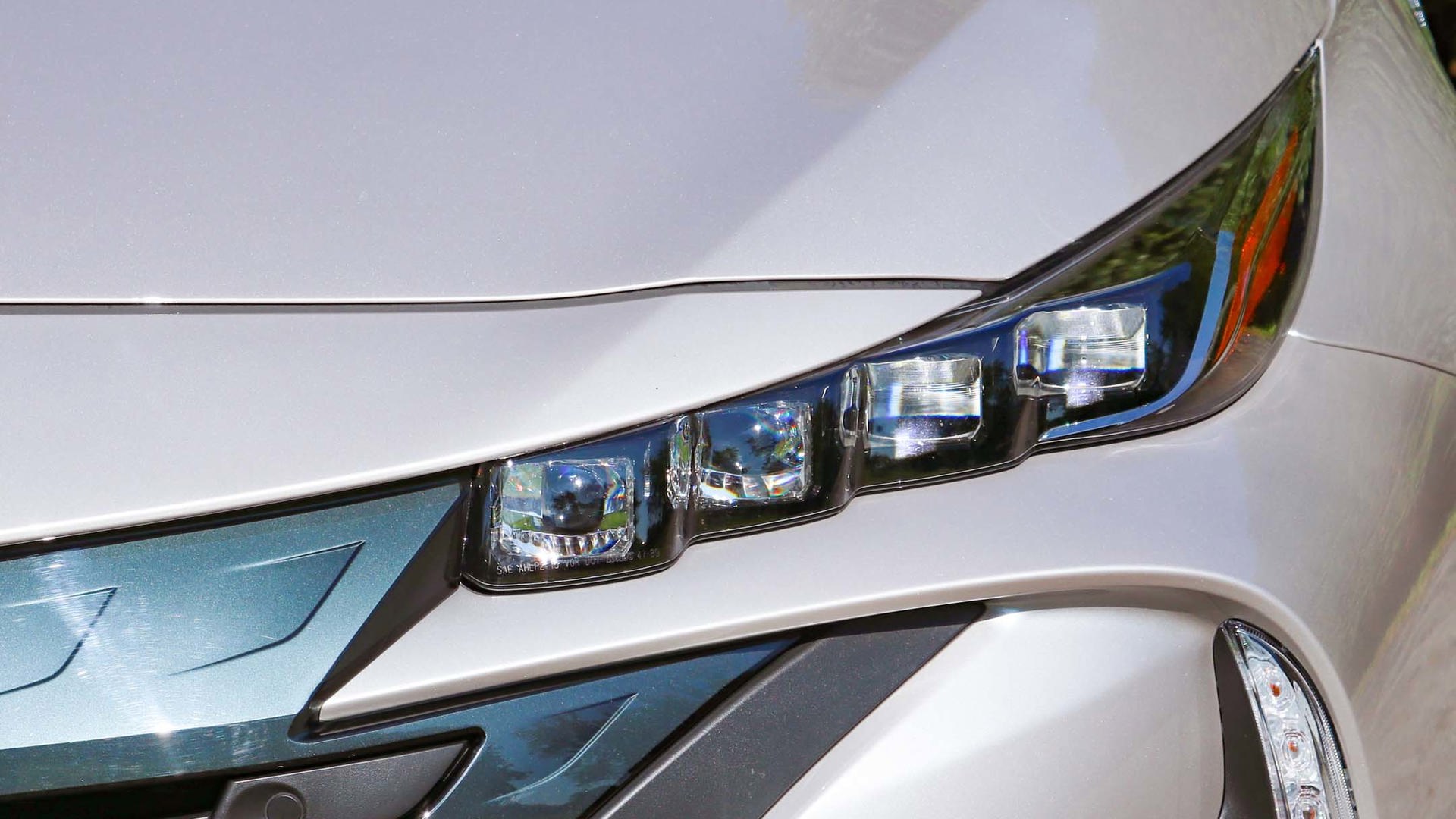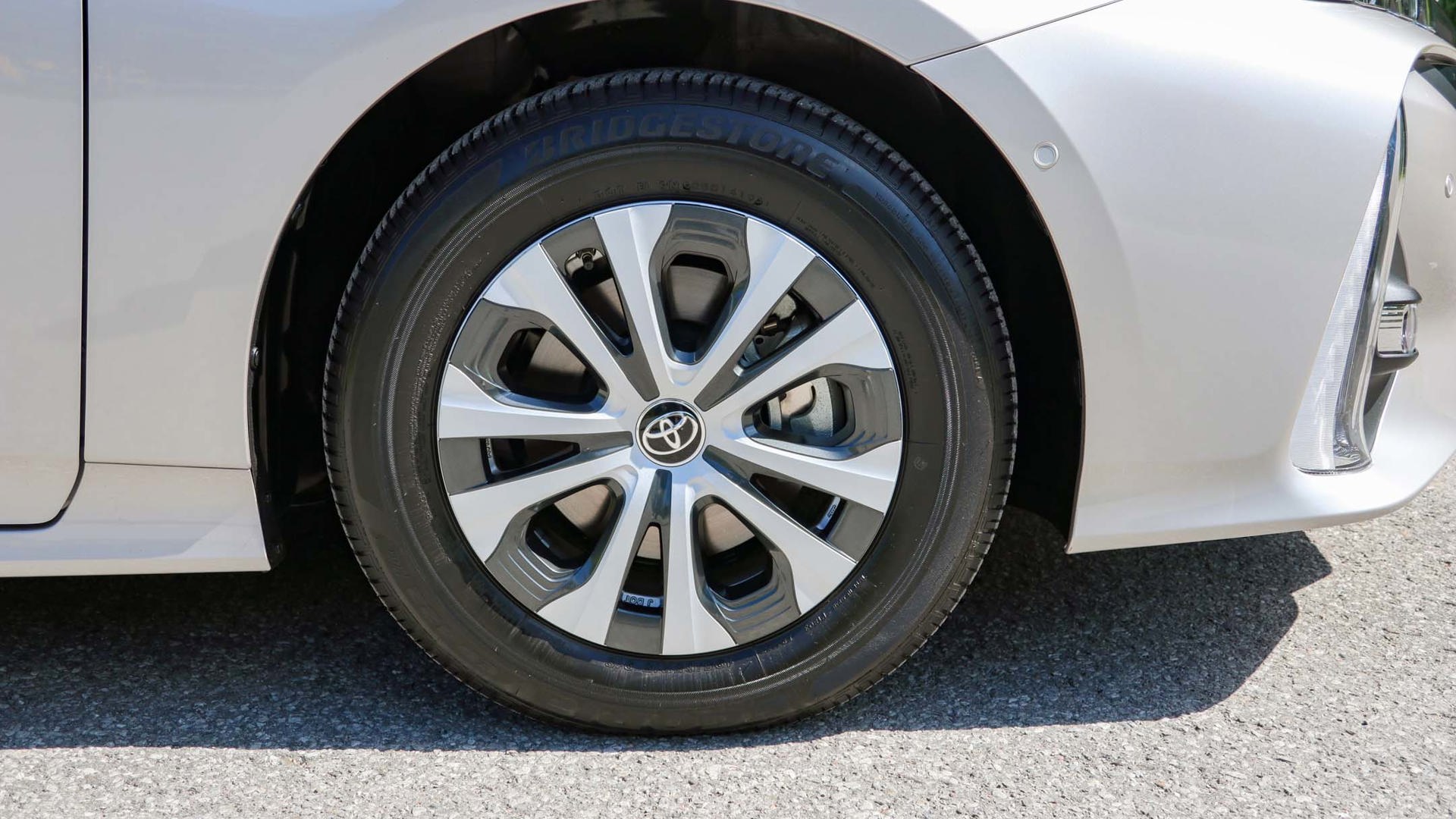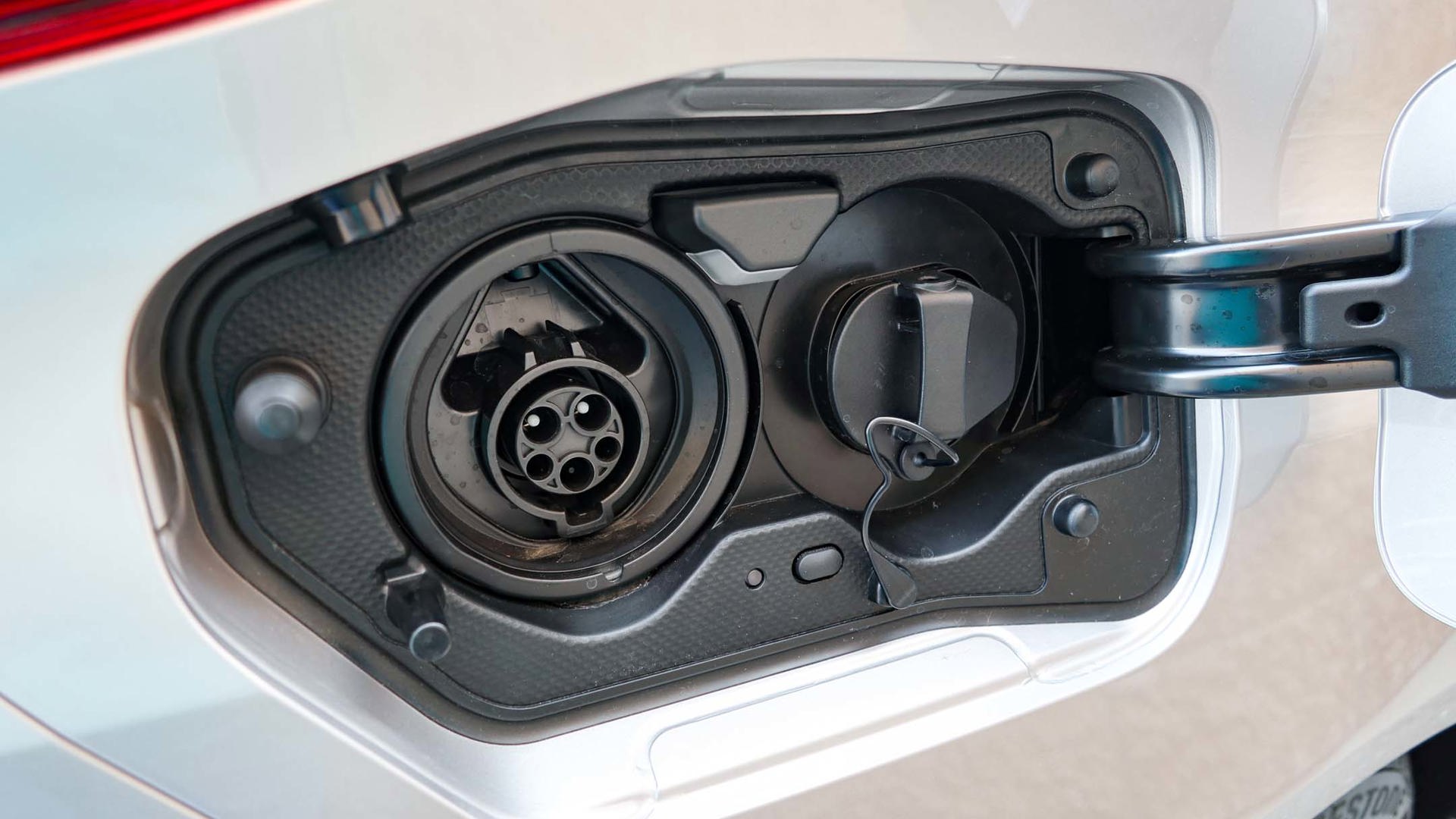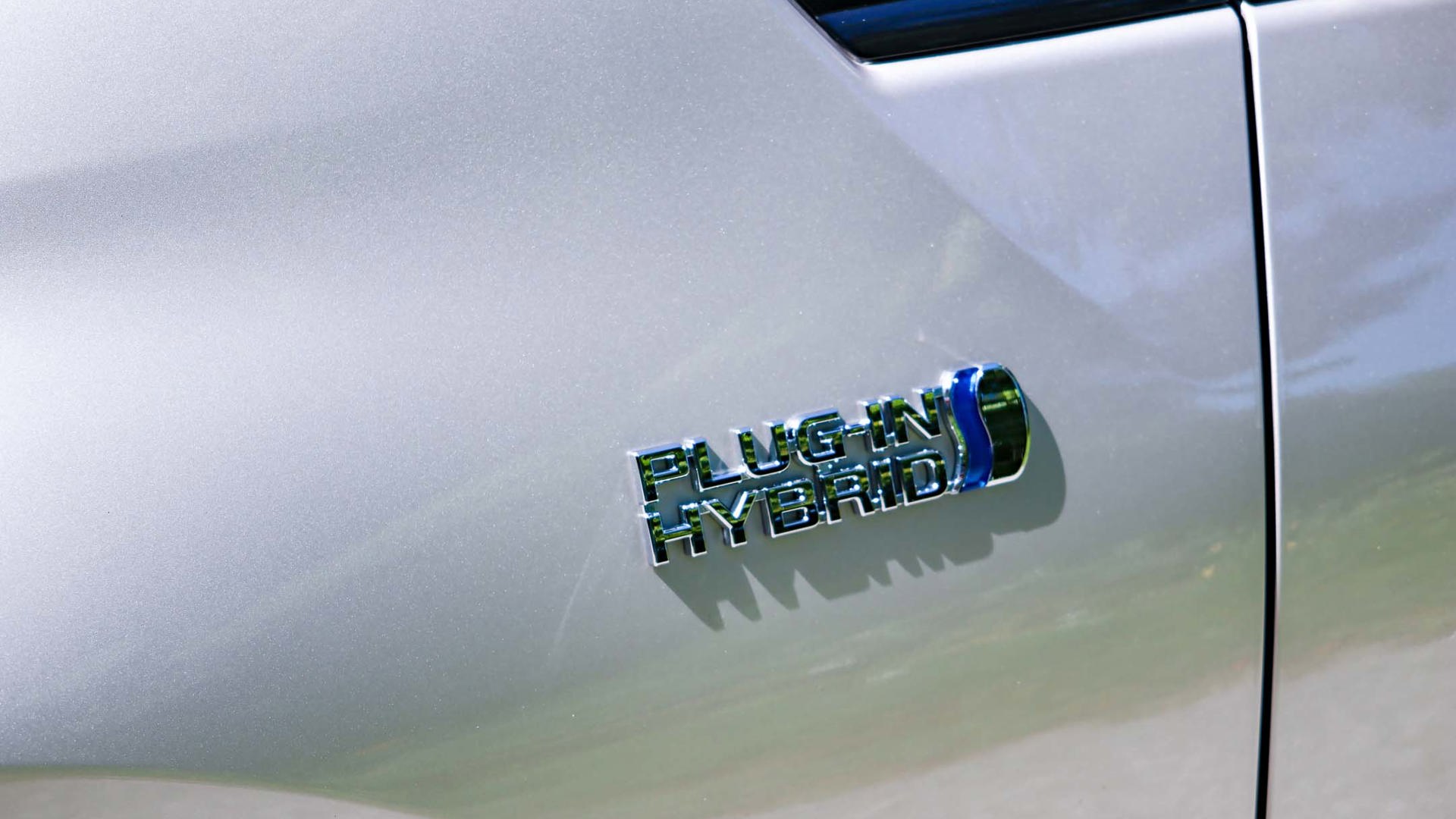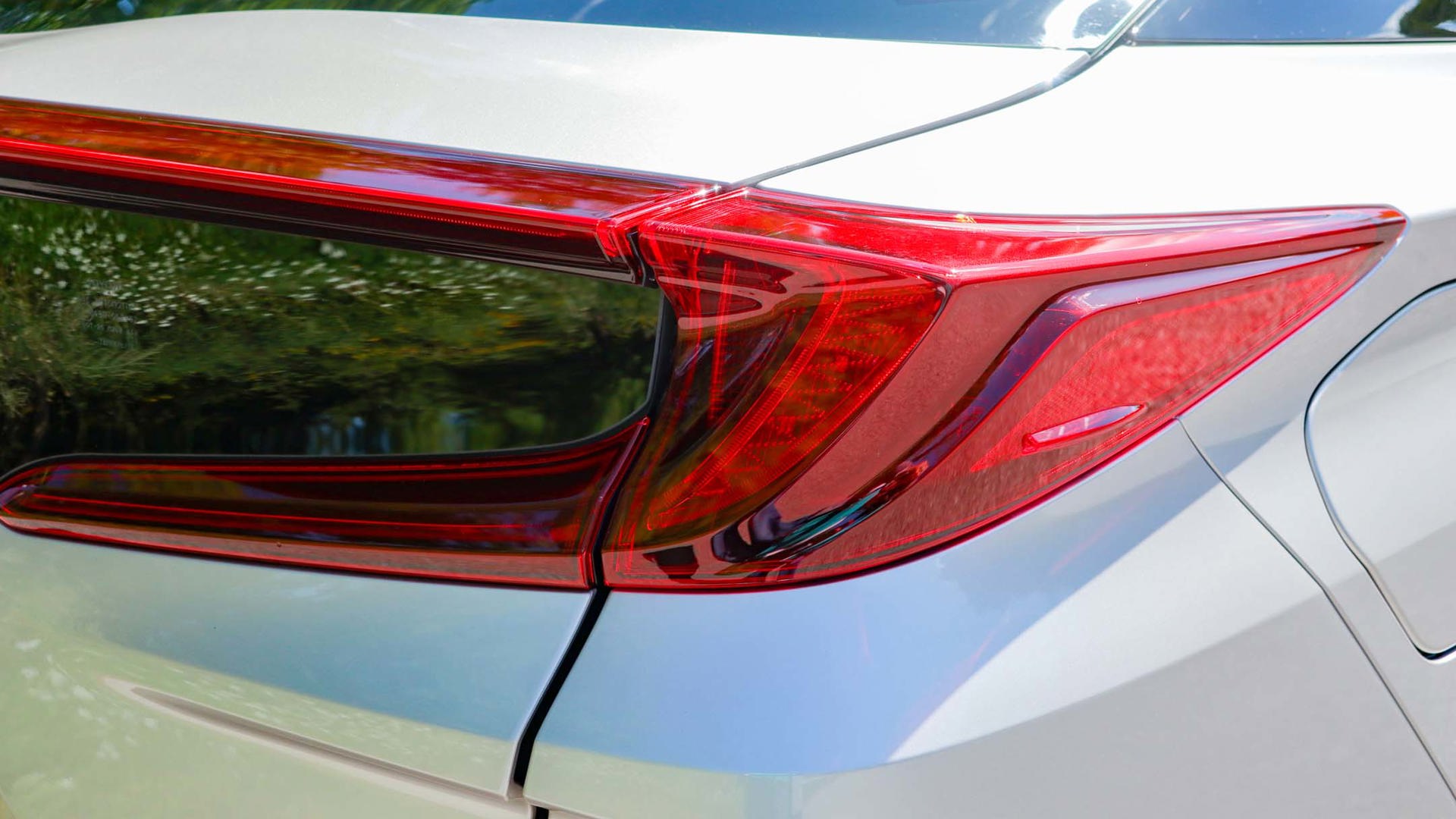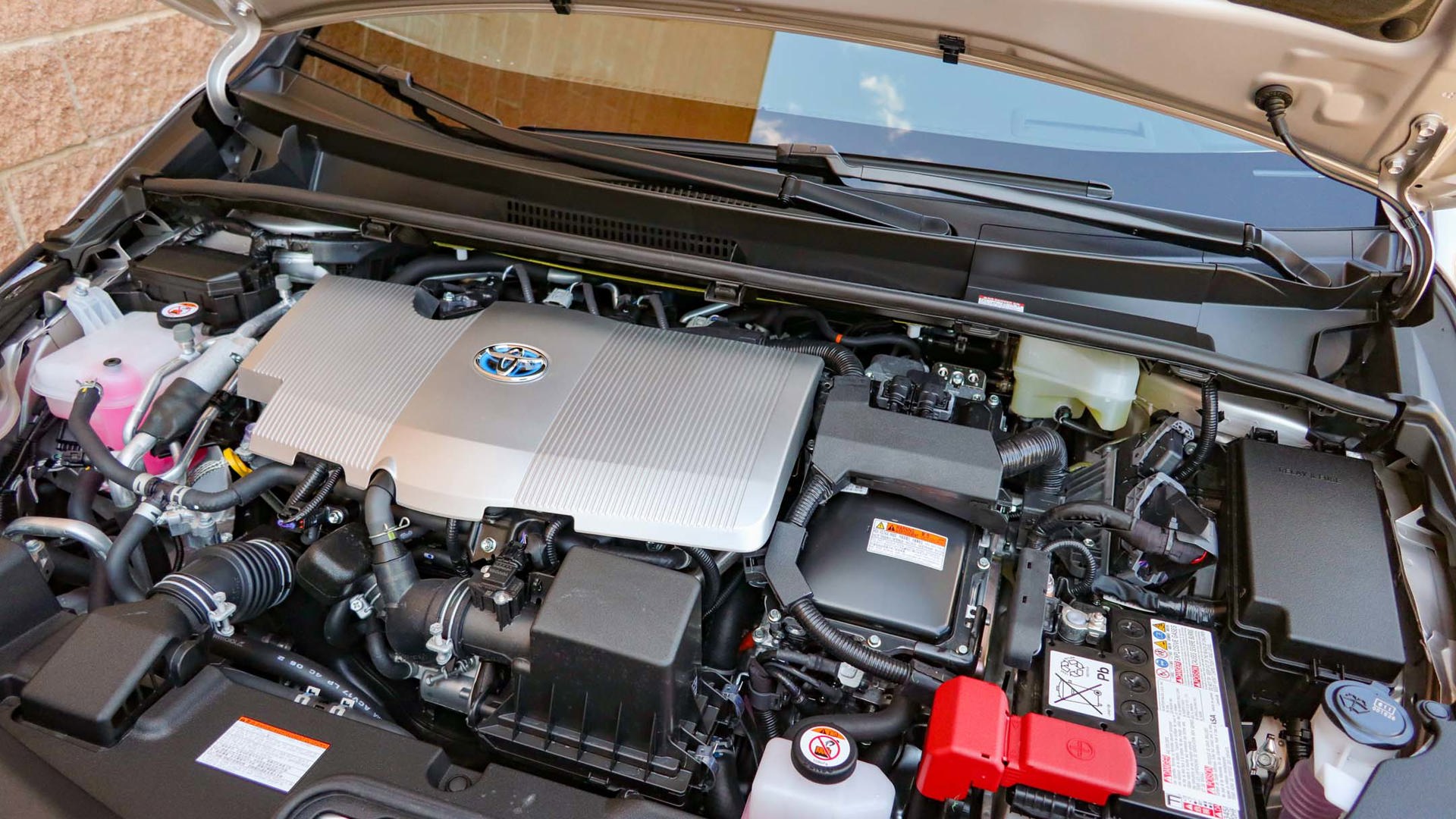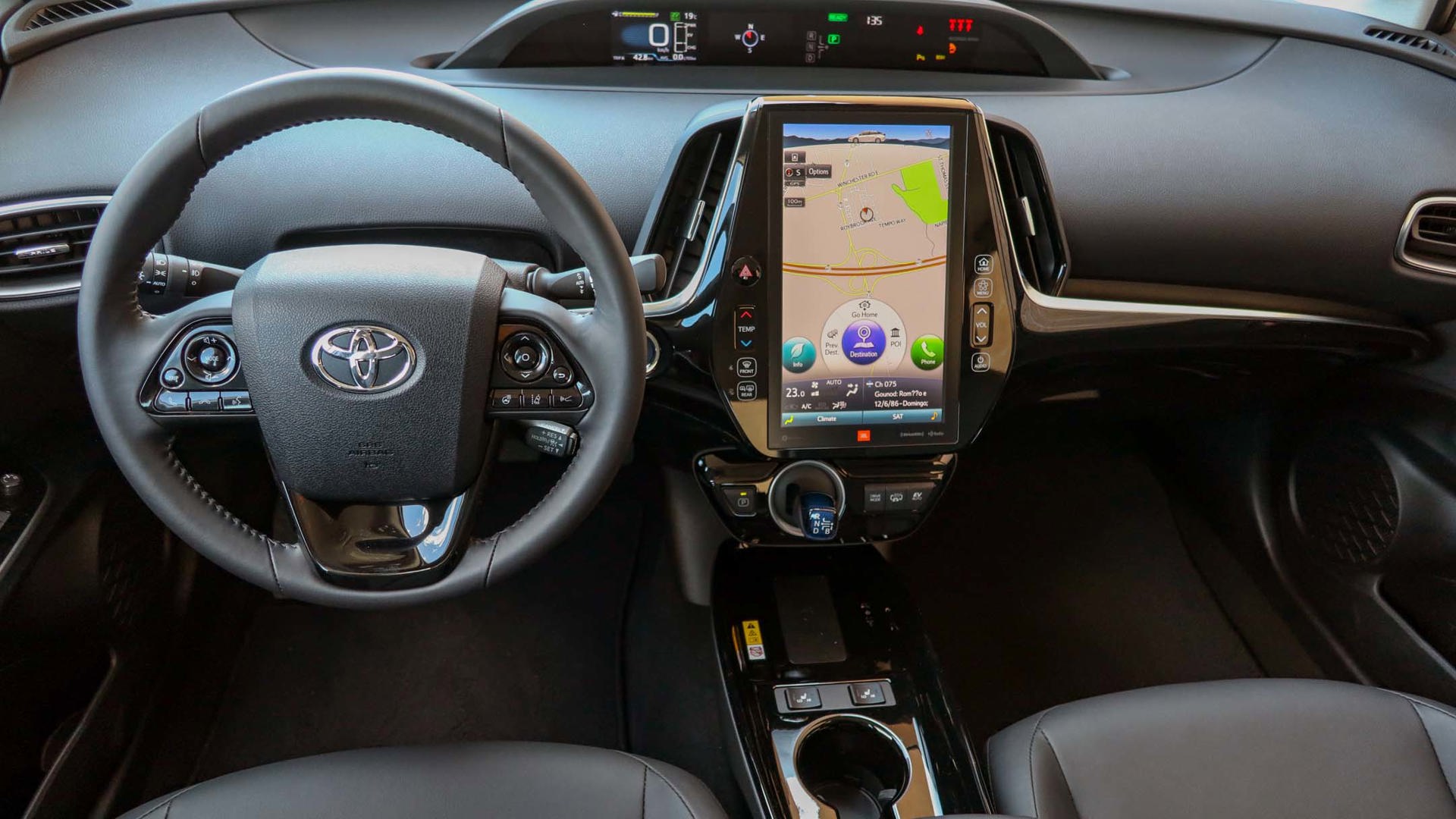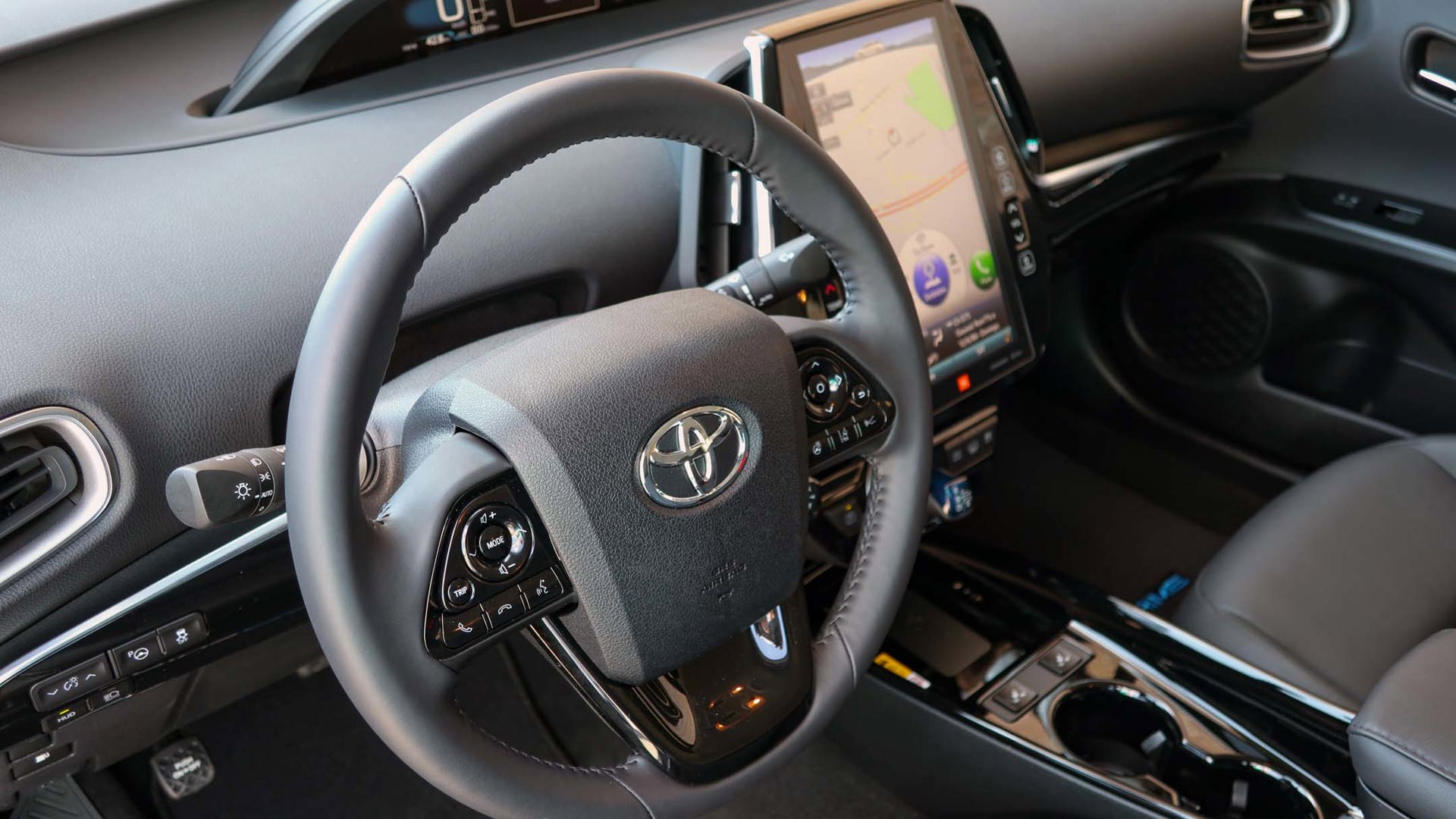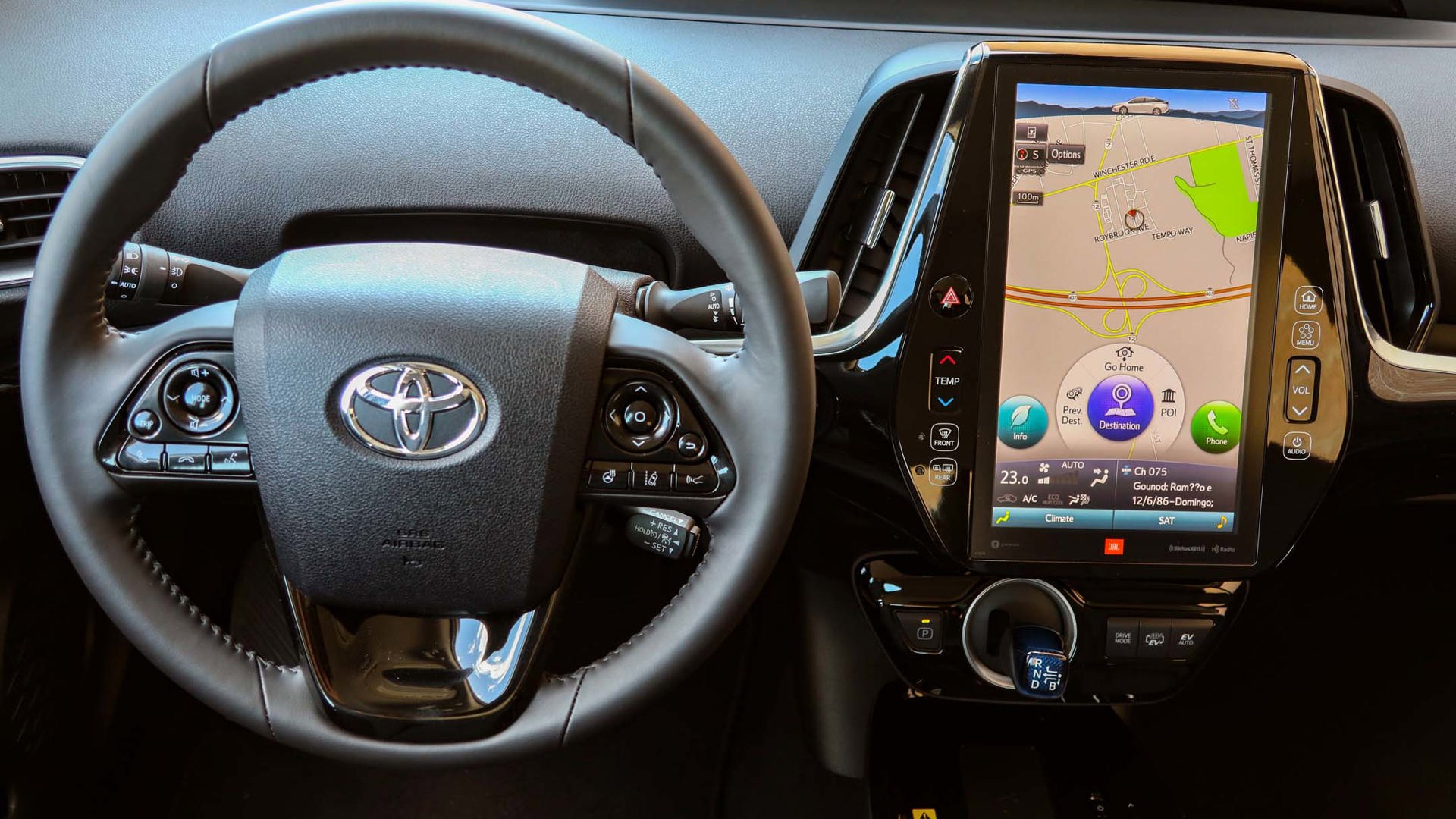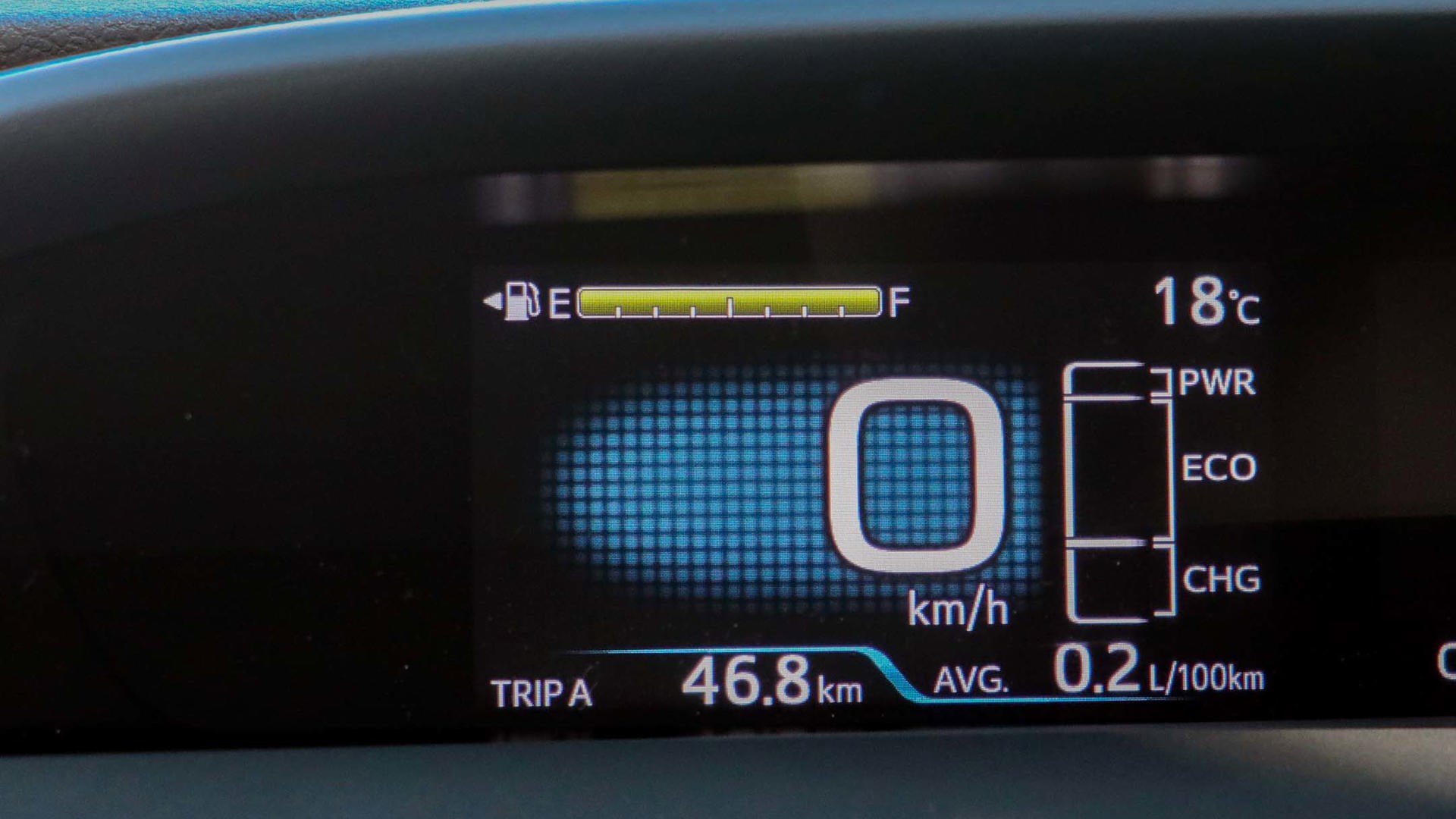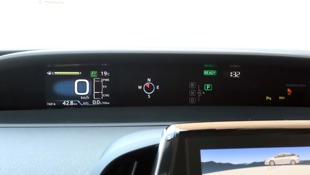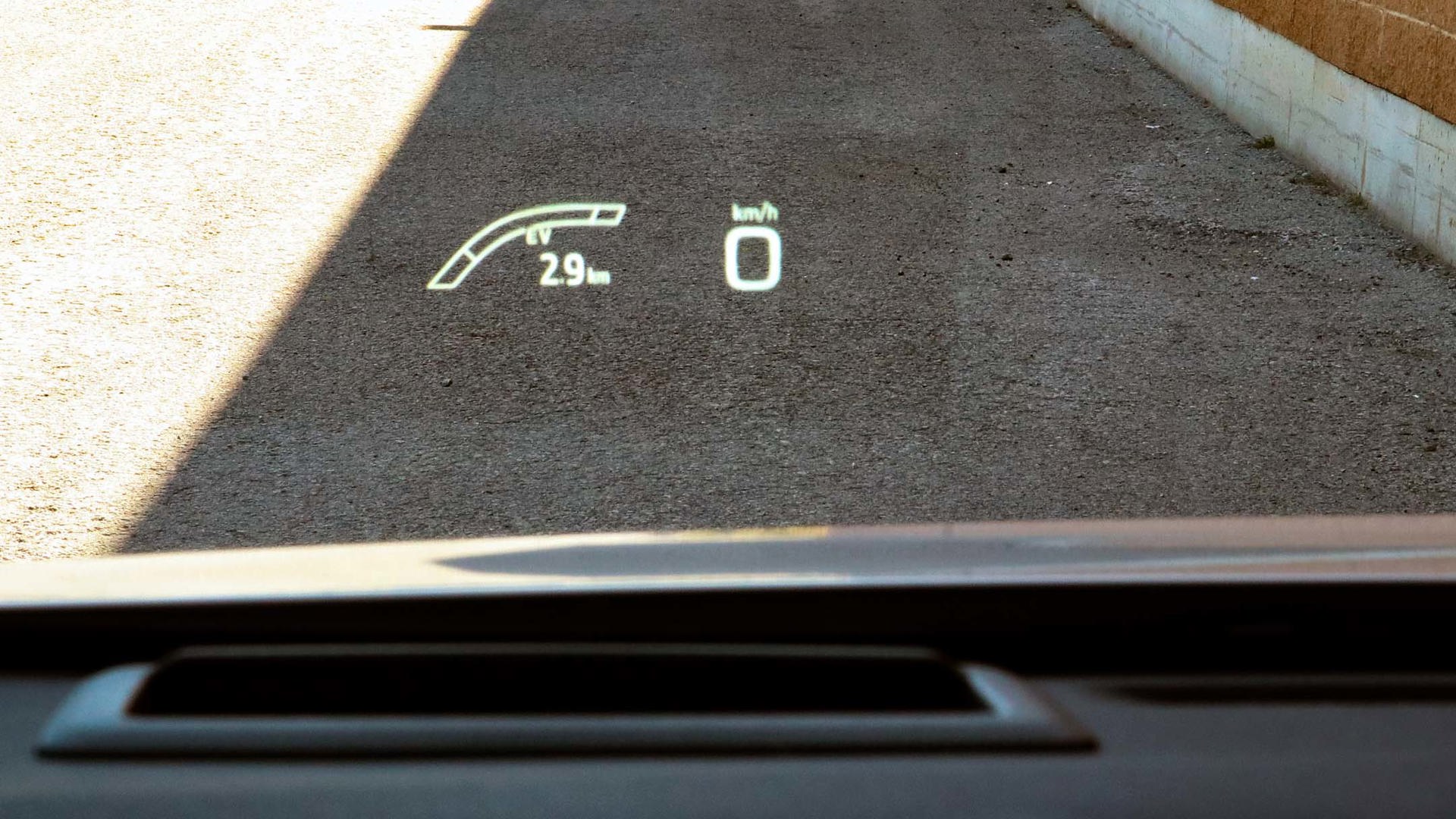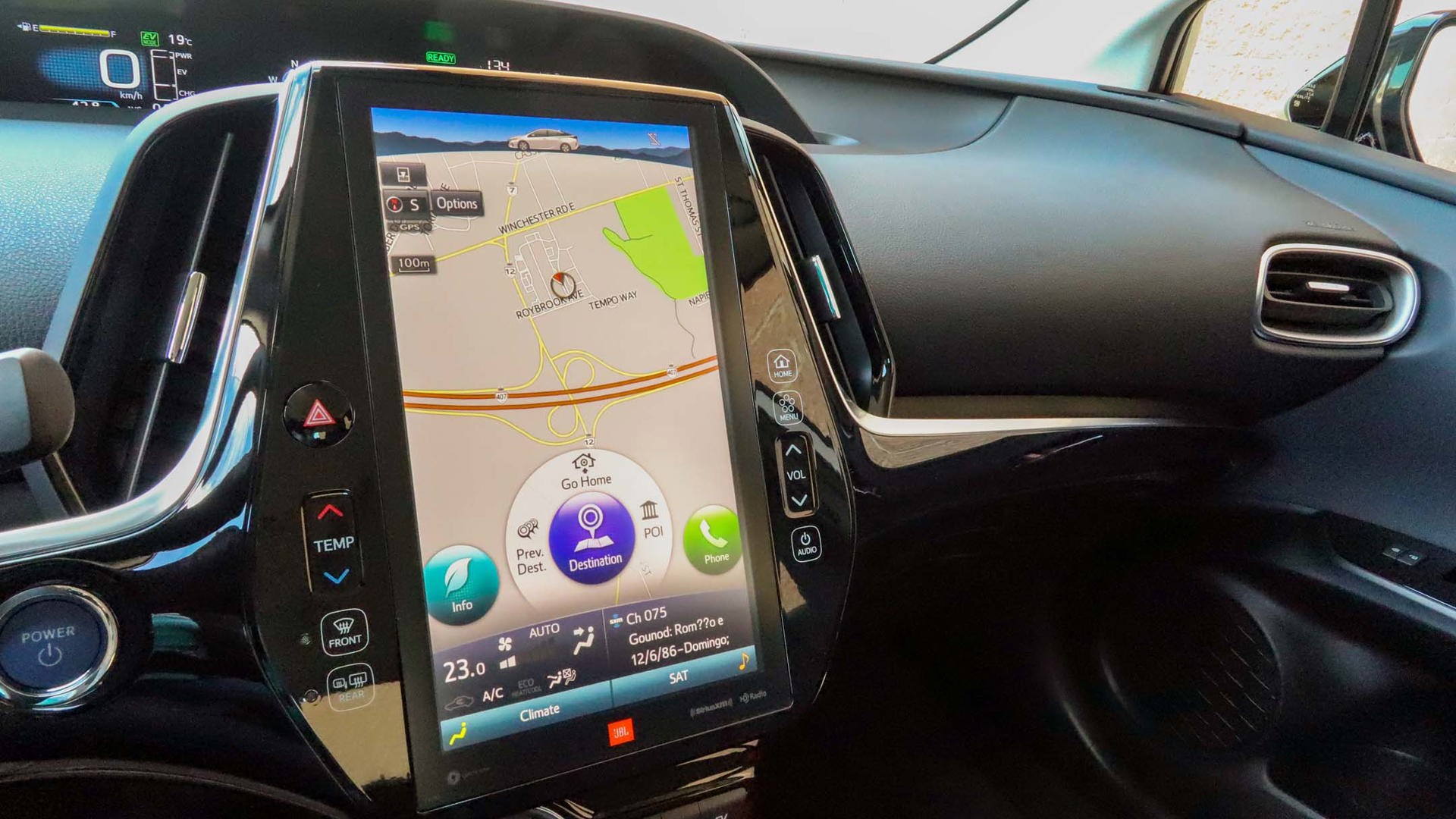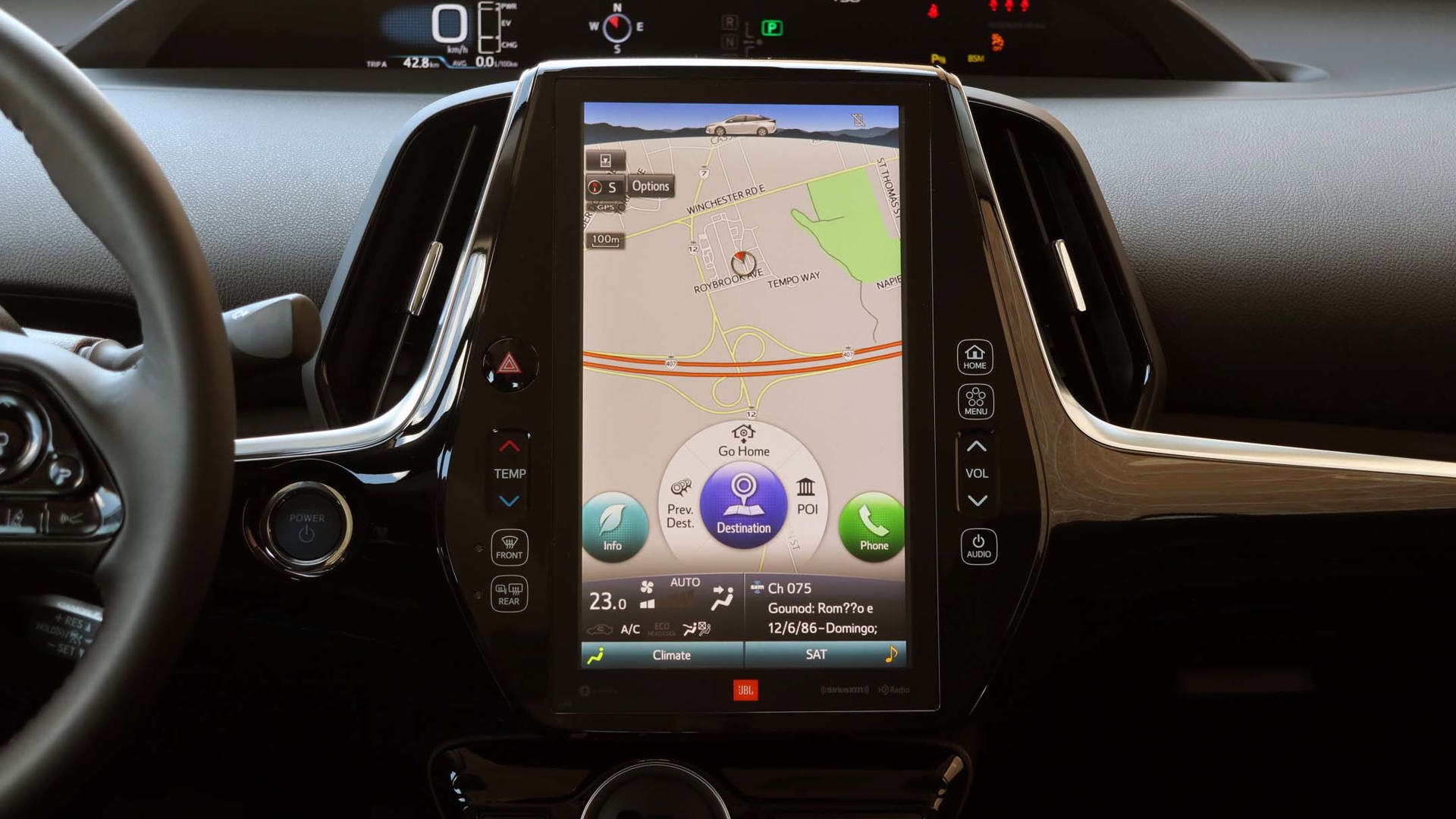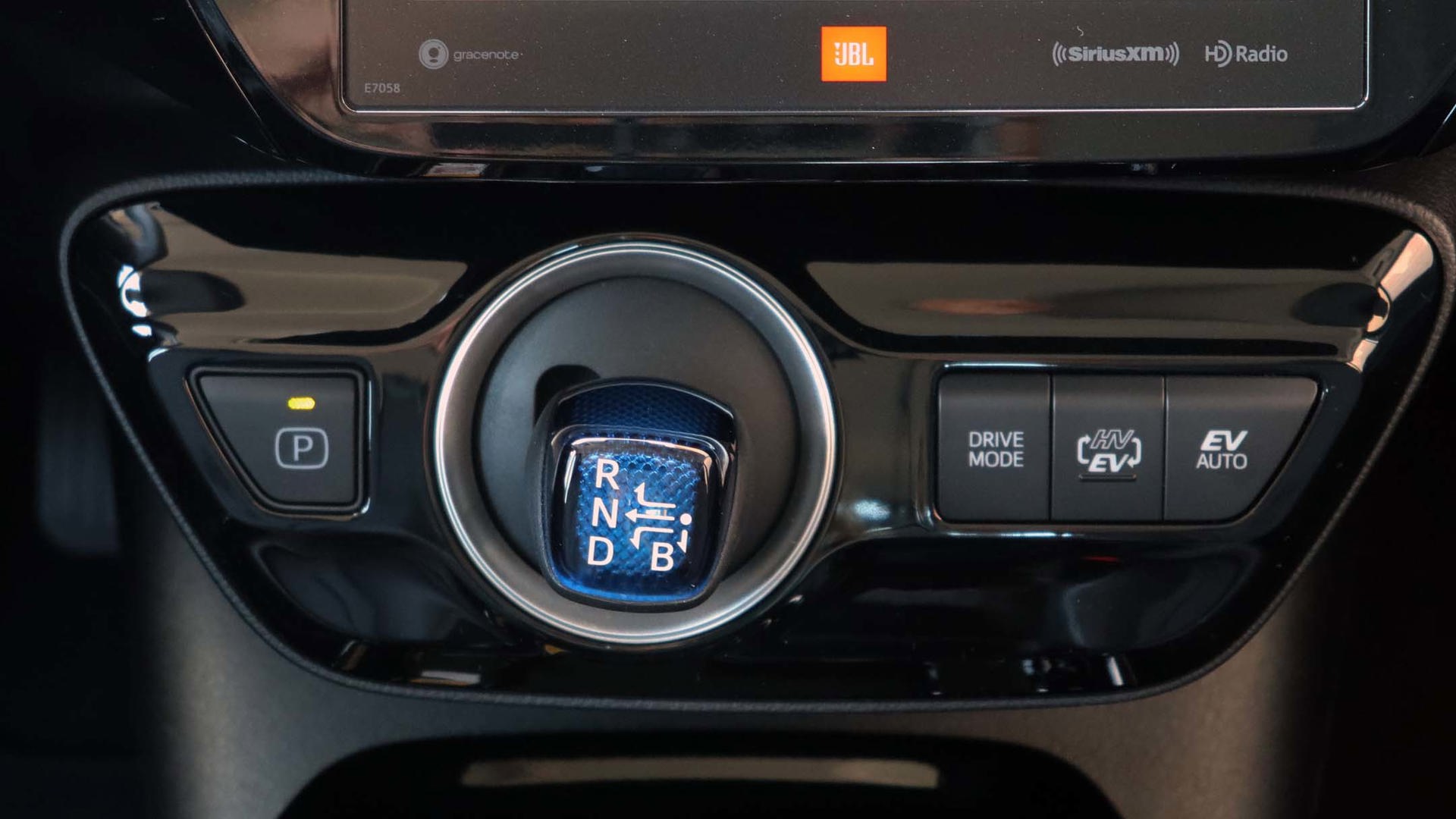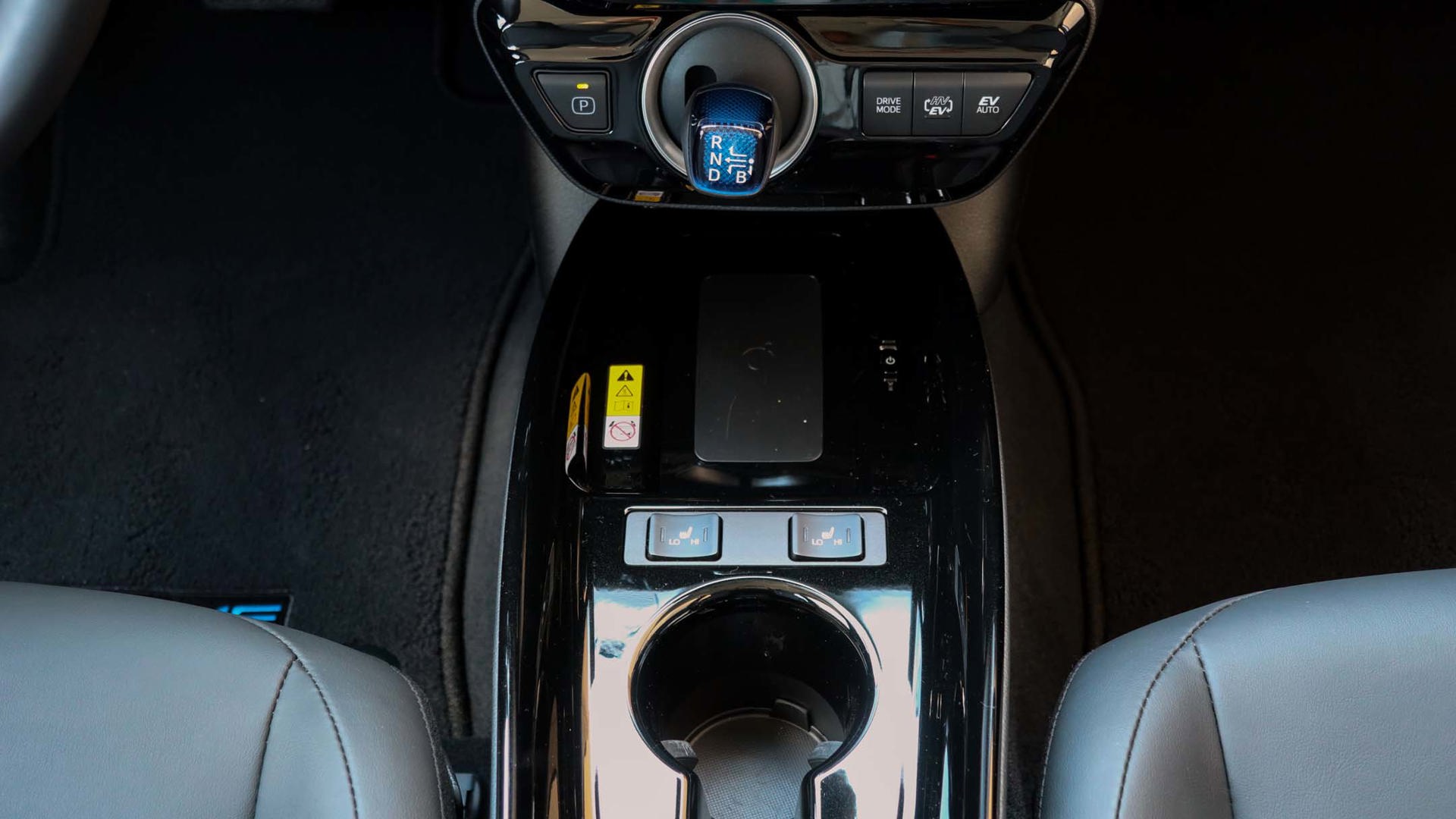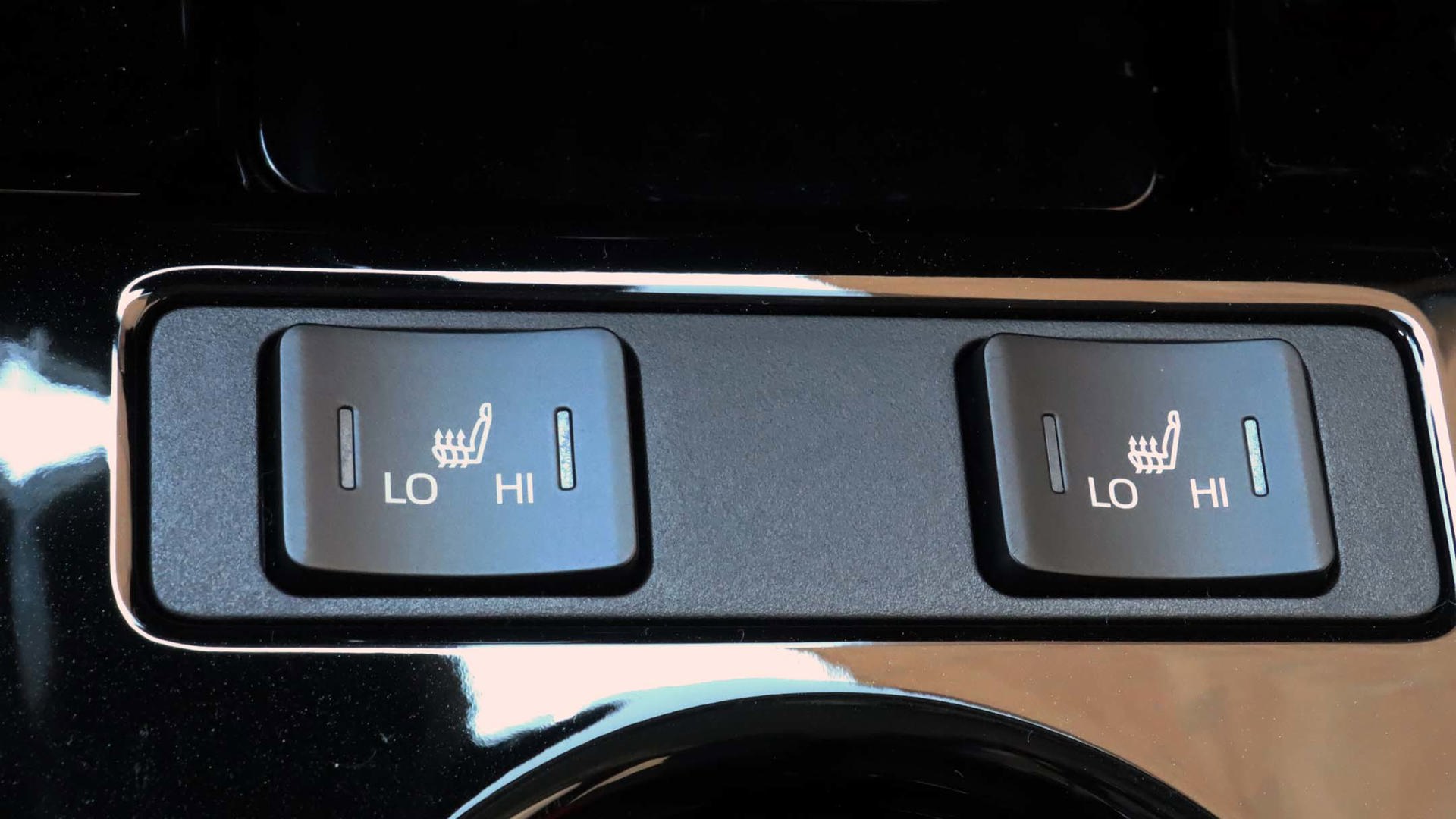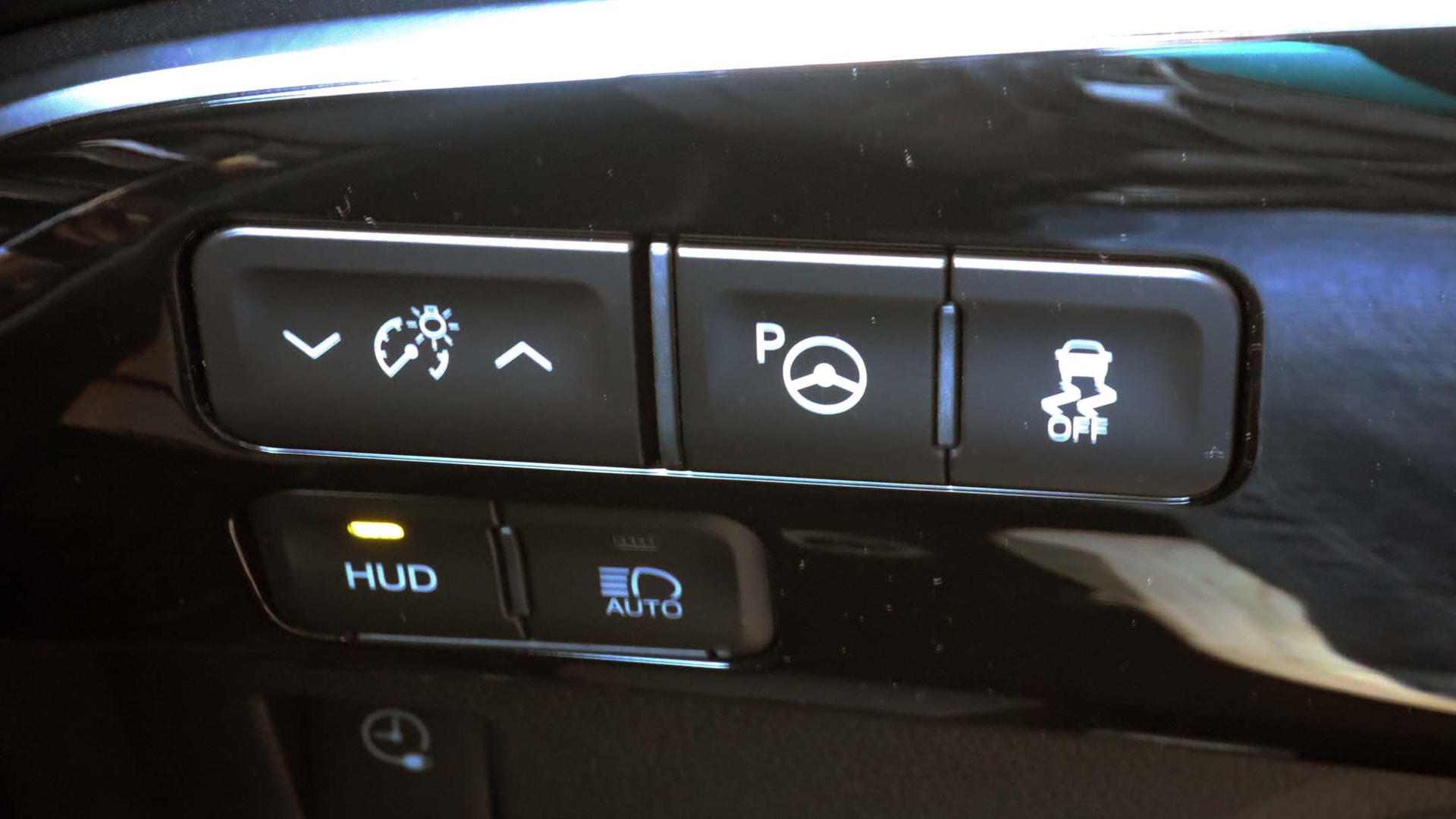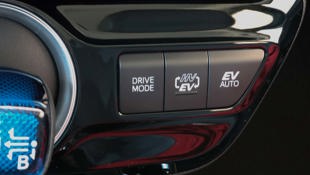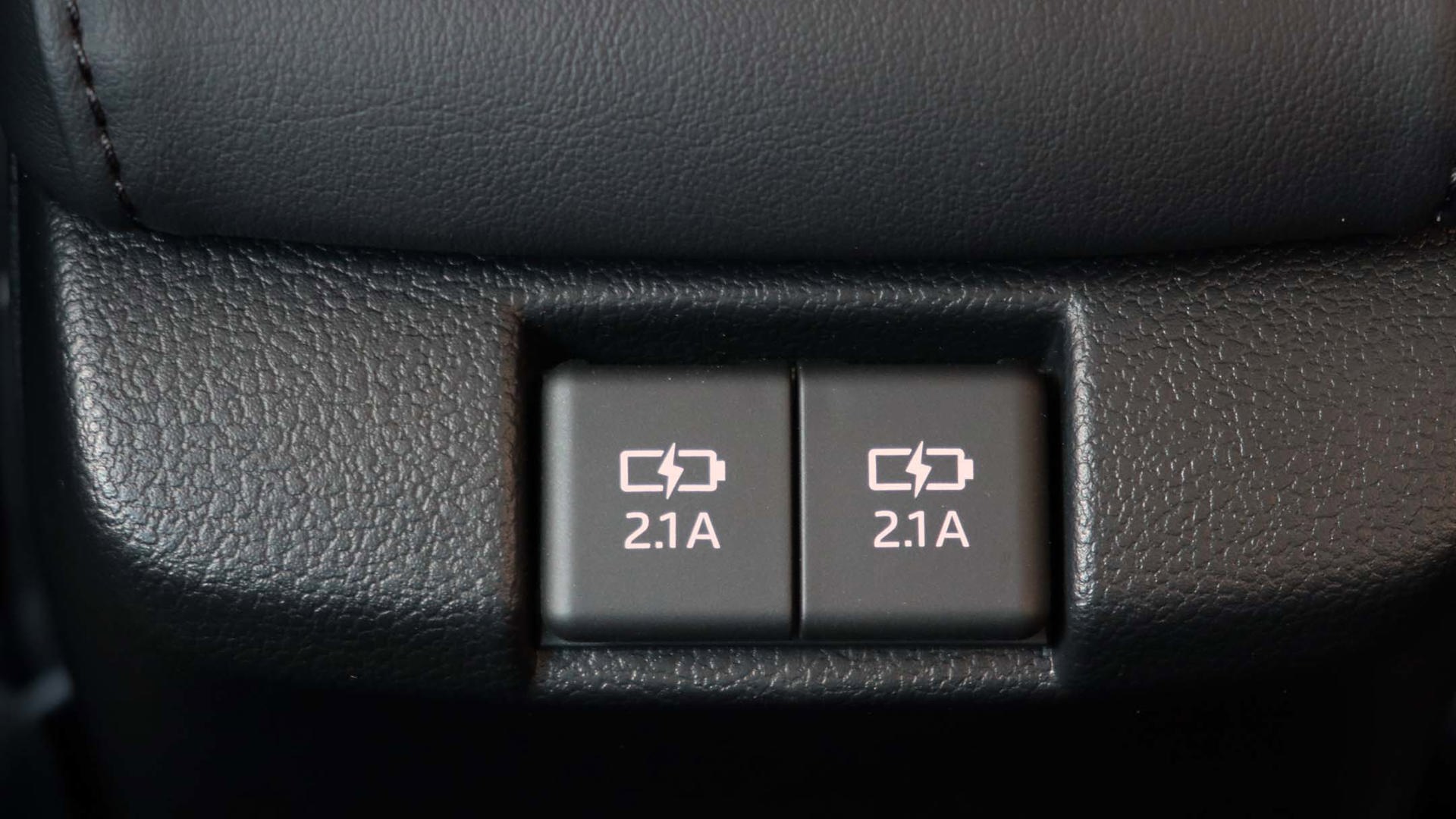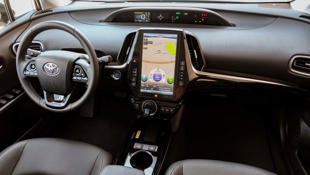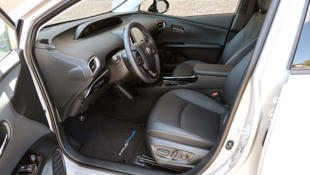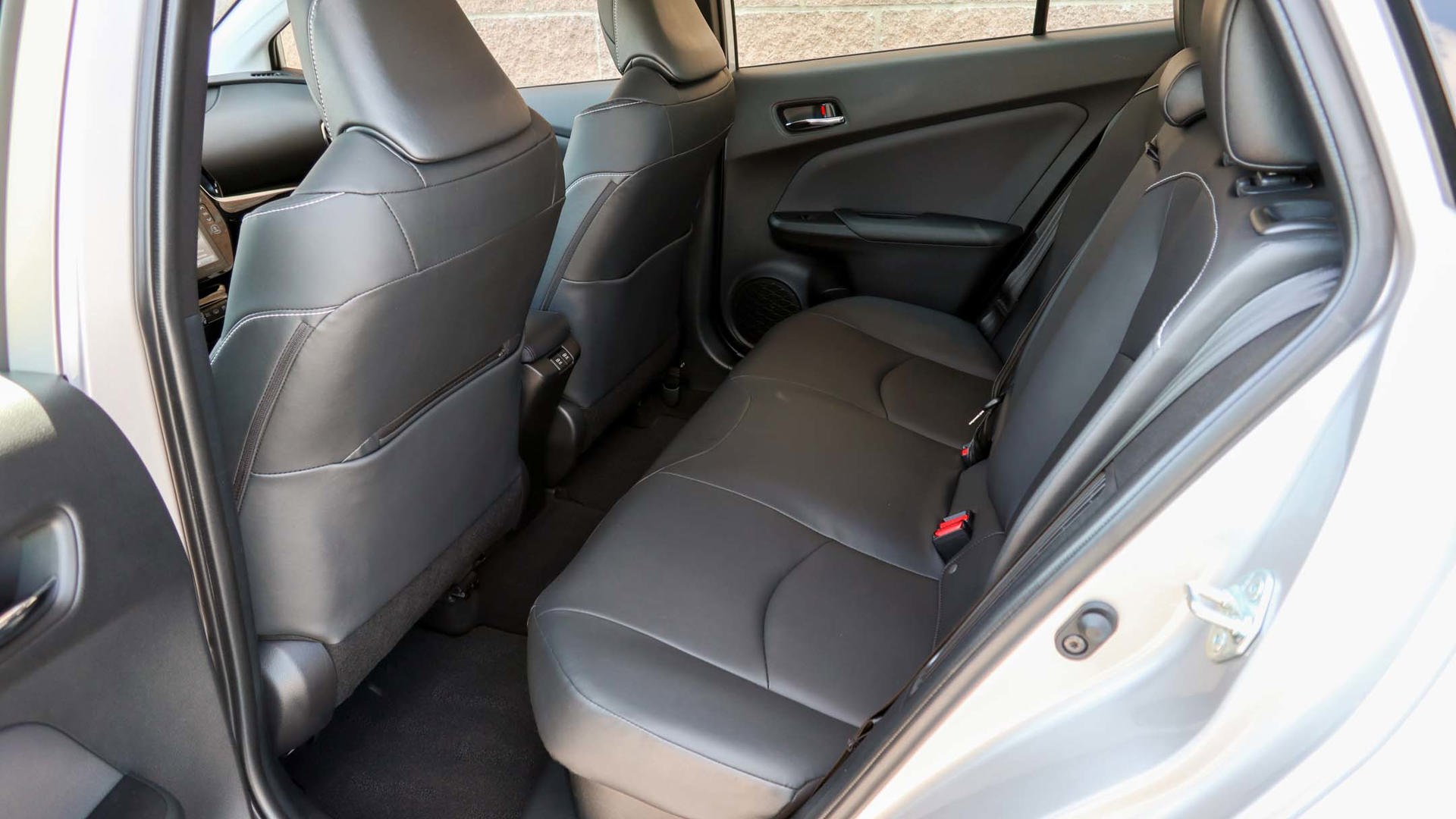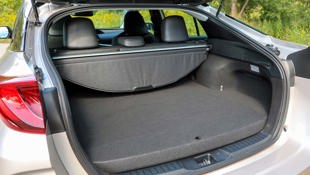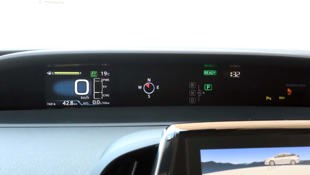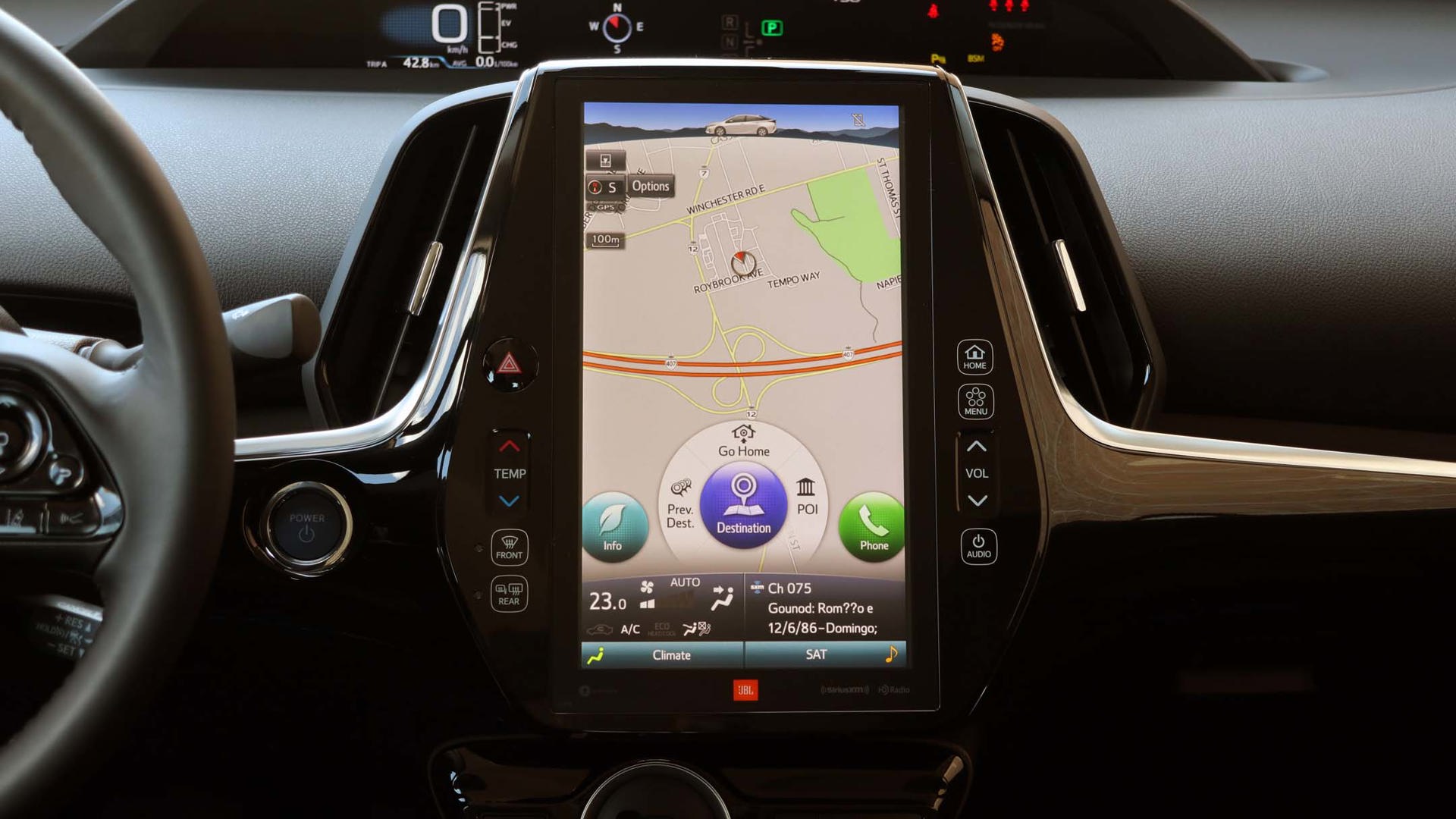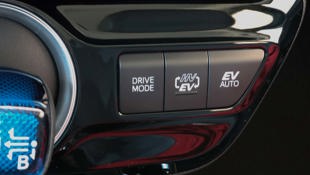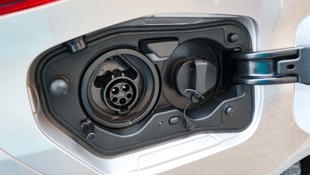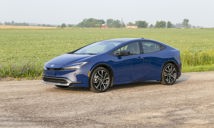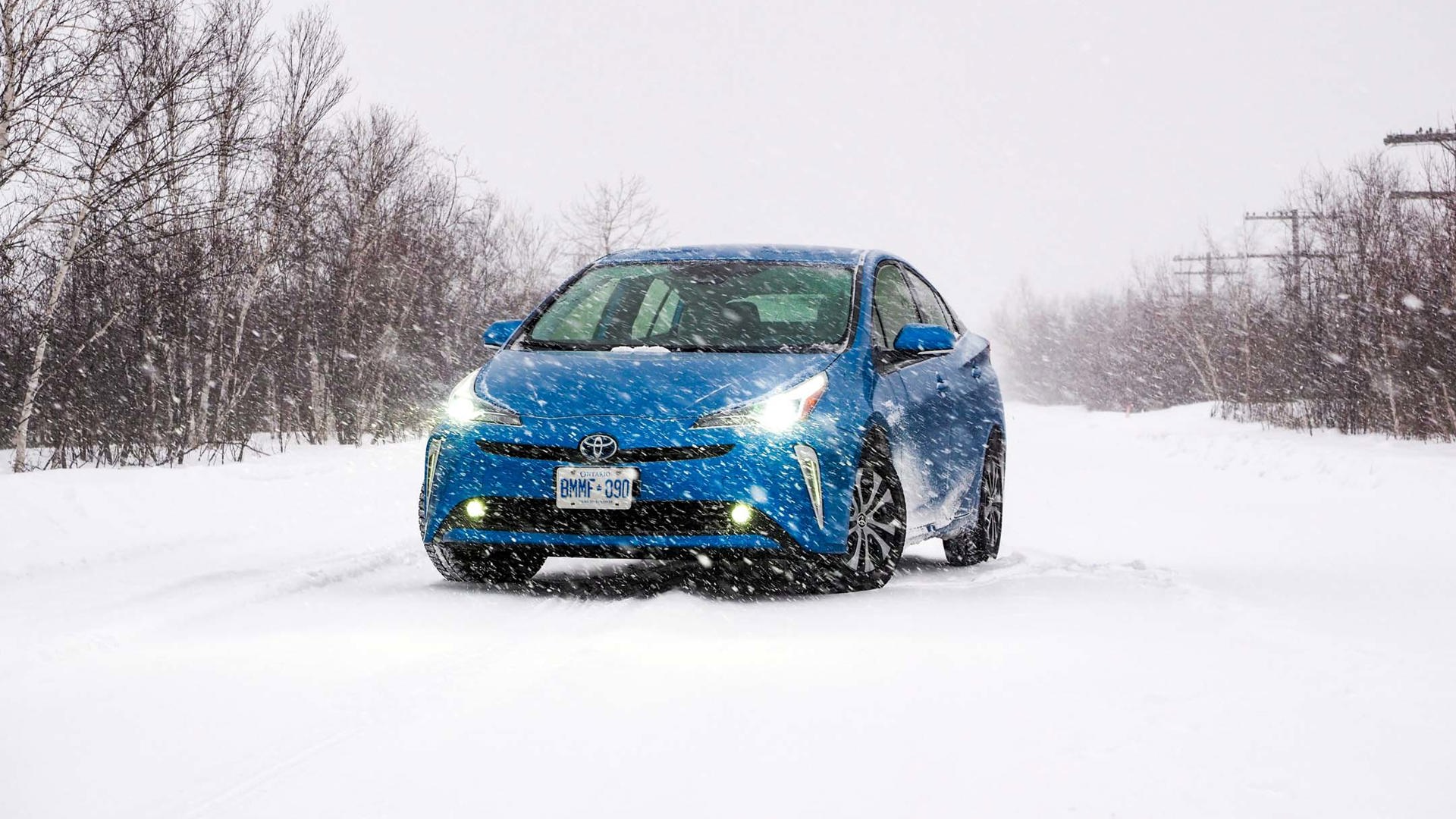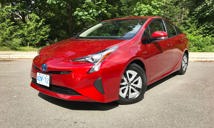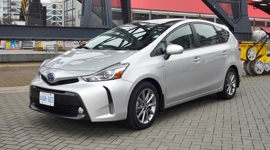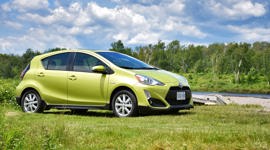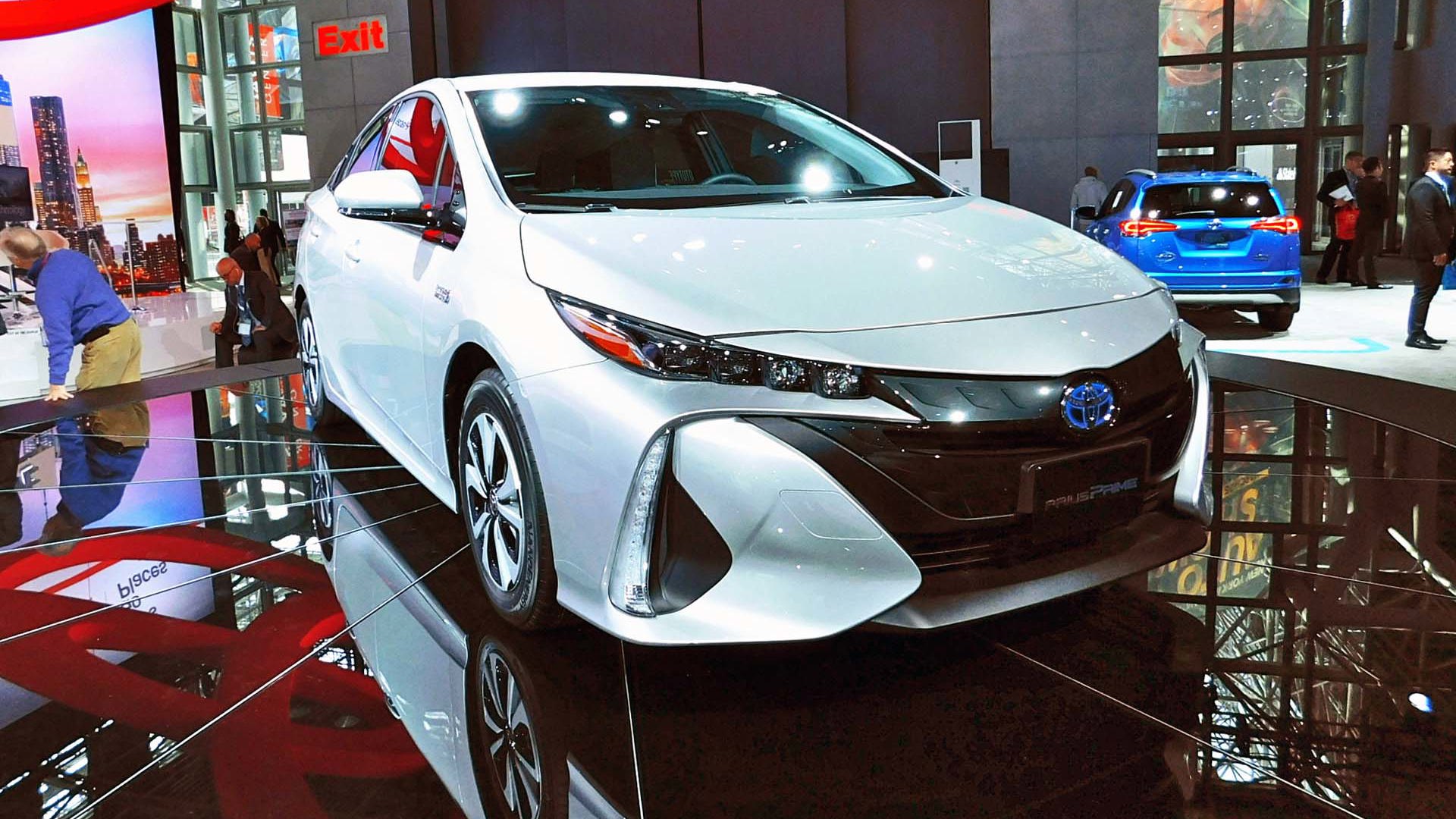 AutoTrader SCORE
AutoTrader SCORE
-
STYLING6/10
-
Safety8/10
-
PRACTICALITY8/10
-
USER-FRIENDLINESS4/10
-
FEATURES8/10
-
POWER7/10
-
COMFORT8/10
-
DRIVING FEEL8/10
-
FUEL ECONOMY9/10
-
VALUE8/10
If you’ve been thinking about an electric car but are concerned about how far you’ll get on a charge, a plug-in hybrid (PHEV) could be the ticket.
These vehicles can run on their batteries alone, but once that stored charge is depleted, they continue to operate as conventional hybrids – as long as you have gas in the tank, you’ll get where you’re going. Such is the case with the 2020 Toyota Prius Prime, the plug-in take on Toyota’s popular hybrid.
Styling: 6/10
A Toyota exec once told me that hybrid buyers are split down the middle: some want unmistakable styling that screams “green car,” such as the Prius, while others prefer that their cars look conventional, as with the Camry Hybrid.
The Prius Prime is definitely in the screaming green category, with its complicated grille, long vertical running lights, and decidedly weird liftgate with two-piece rear window. The odd dip in the rear spoiler is there for aerodynamics, and while it’s cool from an engineering point of view, it gives the Prius no points for styling. That flat back window could also benefit from a rear wiper, as I discovered on a rainy day, but whether because it would create excessive wind resistance or because the swoopy spoiler doesn’t allow for it, there isn’t one.
Safety: 8.5/10
The U.S. National Highway Traffic Safety Administration (NHTSA) hasn’t yet crash-tested the Prius Prime, but the Insurance Institute for Highway Safety (IIHS) gave it a Top Safety Pick designation for 2019.
The Prius Prime comes standard with Toyota’s Safety Sense, which includes adaptive cruise control, lane-departure assist that uses the electric power steering to guide you back if you cross the line, emergency front braking with pedestrian detection, and automatic high-beams. However, if you want blind-spot monitoring and rear cross-traffic alert, it’s only available on the Upgrade trim level as part of a $3,000 Technology Package.
All that said, there’s one “safety” feature I’d like to see Toyota send to recycling, if not the landfill: whenever you shift into Reverse, there’s constant beeping. It’s not outside, where it might warn pedestrians that an otherwise silent car is backing up, but rather inside, where it beep-beep-beeps until you select another gear. I know when I’m backing up and don’t need an alarm to tell me.
Practicality: 8/10
I’ve always found hatchbacks to be useful beasts for their cargo space. It’s easy to load up the Prius Prime, thanks to a relatively low lift-over to put in groceries or other items. However, the cargo floor is higher due to the battery being under it, and while the regular Prius hybrid offers 697 L of cargo space, the Prius Prime and its larger battery has 561 L.
The 2019 Prius Prime held only four people; for 2020 there’s five-passenger seating, although you really don’t want to be the one in the middle.
User Friendliness: 4/10
That low score is reserved for the Upgrade trim. In place of the base Prius Prime’s relatively simple array of buttons, dials, and toggles to activate the climate system or the stereo, the Upgrade swaps in an 11.6-inch touchscreen that handles the lion’s share of the functions.
Where I live, it’s illegal to operate a hand-held phone while driving, and there should be stiff fines for doing that. So why, then, am I tapping and swiping on the equivalent of an iPad when I’m piloting this car? Just because the driveline is high-tech, it’s not a sin to have an infotainment system that’s a little more low-key and far less distracting.
The screen takes a few seconds to fully activate after the car is started, meaning you sit for a bit before you can adjust your climate controls or radio station. And when sunlight hits it – which happened several times when I was driving with the sun behind me – the screen is useless because you can’t see anything on it.
The Upgrade trim includes navigation, but I was not impressed. Using voice command, I said the entire address as requested. Each time, the system repeated the address correctly, but then brought up a half-dozen street choices, always with the right one on top. Once I’d picked that, I’d then have to repeat the street number. On several occasions, the navigation wanted to send me east when I was trying to go west, and three times it sent me around the block for no apparent reason before taking me right back to where I originally was and then continuing along my original route.
Features: 8/10
The base Prius Prime comes well-stocked, and for 2020 gets standard satellite radio and Apple CarPlay (but not Android Auto), along with two extra USB ports for the rear seats. Other items include automatic climate control, a government-mandated rear-view camera, cargo cover, proximity sensor, and LED headlights.
Moving to the Upgrade adds that infernal oversized touchscreen, along with wireless charging, vinyl seat panels, and eight-way power driver’s seat. My tester’s optional Technology Package further added a head-up display, premium sound system, auto-dimming mirror, garage door opener, blind-spot monitoring, automatic parking assist, rain-sensing wipers, and LED fog lamps.
Power: 7/10
You’re buying this because of its fuel efficiency, not because it’s a powerhouse. If you go in with that in mind, you’ll be just fine with it.
It’s powered by a 1.8L four-cylinder gasoline engine that, on its own, makes 95 hp and 105 lb-ft of torque. With the hybrid electric motor working alongside it, that rises to a net 121 hp. That goes to the front wheels through an automatic continuously variable transmission (CVT).
The big deal, of course, is that you can plug this car in. It can be charged on regular household current, which takes about five and a half hours; on a 240-volt charger that drops to about two hours. You can also schedule the charging to automatically start at a pre-set time, to take advantage of off-peak pricing. Once mine was charged, my readout said I had about 48 km of electric-only driving. Exactly how far you’ll go depends on several factors, including ambient temperature, climate system use, and how you drive, but I still got 43 all-electric kilometres even on the highway.
Forty-odd klicks may not sound like much, but in reality, most overestimate how much they drive. For many people who charge it regularly and commute fewer than 20 km each way, the Prime could spend much of its life on electricity only.
Comfort: 8/10
The Upgrade level features seats trimmed in soft faux leather, and for the average commute, they’re supportive and comfortable. Part of my time with the car involved two four-hour treks, and while the seats got a little bit hard toward the end of it, I realize it’s meant as an urban warrior, not a cross-Canada cruiser.
Legroom is good in the front seats and also in the rear, where there’s a bit more space than expected for a vehicle this size. There’s a new middle position in the rear seat, turning the Prius Prime into a five-seater, but consider that primarily for children or for short trips for adults.
Driving Feel: 8/10
Here’s the thing about all-electric driving: you get hooked pretty quick. It becomes a challenge to see how far you can go on battery alone – without holding up traffic – and it’s almost a disappointment when the charge runs down and you realize the gasoline engine is coming on. There is an EV Auto Mode button which, when activated, will use the stored charge but will allow the gasoline engine to start up and add extra power when needed, such as on steep hills or when passing. Even so, the fully charged Prime will easily keep up with highway speeds on its battery alone.
When it’s on hybrid operation, the Prime behaves as a regular Prius, automatically and almost seamlessly switching between gasoline and electricity, and recharging the hybrid battery with regenerative braking.
The Prime isn’t an exciting car to drive, but on the other hand, it feels pretty much like your average mainstream commuter car. The steering is light but livelier than you’d expect, it takes corners smoothly, and it’s well-planted and confident at highway speeds. The brakes have a bit of an artificial feel to them, but the car stops as it should. Overall, it’s enough of a “regular” car to appeal to those who are new to electrified vehicles.
Fuel Economy: 9/10
Officially, the Prius Prime is rated at a combined 4.3 L/100 km for city/highway driving, and at 1.8 Le/100 km – the gasoline litres equivalent when it’s running on electricity. Natural Resources Canada (NRCan) estimates the cost of fuelling a vehicle for a year, and with its plug-in ability, the Prius Prime comes in at $635 annually, versus $898 for a regular Prius.
During my week with it, on the days that I was able to plug it in and run on that charge first, the average on my dashboard readout was 2.7 L/100 km. I took it out of town for a weekend and my hotel didn’t have a charging station, so I ran exclusively on hybrid operation for three days. Even so, over the course of a week, I averaged an impressive 3.3 L/100 km, and spent $31 (at $1.16/L) to travel 804 km.
Value: 8/10
While the regular Prius starts at $28,550 and goes as high as $35,250, the Prius Prime runs between $32,990 and $37,990. Debating the difference will depend on how often you plan to charge it up: if you plug it in at every opportunity, you’ll likely make up the difference that much faster. Plus, if you’re willing to accept the longer charging time, you can plug the Prius Prime into your regular household outlet, without paying to install a 240-volt home charger.
I do wish Toyota would make the optional Technology Package available on the base Prime, though. I wouldn’t buy the Upgrade trim level solely because I’d be stuck with that awful centre screen, but I do like some of the tech pack’s features, including the head-up display, auto-dimming mirror, and the blind-spot monitoring – which I’m surprised isn’t included as standard equipment on all models.
The Verdict
For all that electric cars are in the news, the reality is that – at least for now – they are not for everyone. For those who want fuel-free driving but still suffer from “range anxiety,” a plug-in hybrid may be the ticket, and the Prius Prime is not only a good one, but among the least expensive of the current offerings. For those who want to “go green,” it’s definitely worth a look.
| Engine Displacement | 1.8L |
|---|---|
| Engine Cylinders | I4 |
| Peak Horsepower | 95 hp @ 5,200 rpm gas only; 121 hp gas/electric combined |
| Peak Torque | 105 lb-ft @ 3,600 rpm gas only |
| Fuel Economy | 4.3/4.4/4.3 L/100 km cty/hwy/cmb; 1.8 Le/100 km cmb |
| Cargo Space | 561 L |
| Model Tested | 2020 Toyota Prius Prime Upgrade with Technology Package |
| Base Price | $34,990 |
| A/C Tax | $100 |
| Destination Fee | $1,745 |
| Price as Tested | $39,835 |
|
Optional Equipment
$3,000 – Technology Package (JBL Audio, head-up display, auto-dimming mirror, garage door opener, blind spot monitor with cross-traffic alert, clearance sonar with parking assist, rain-sensing wipers, and LED fog lamps), $3,000
|
|
